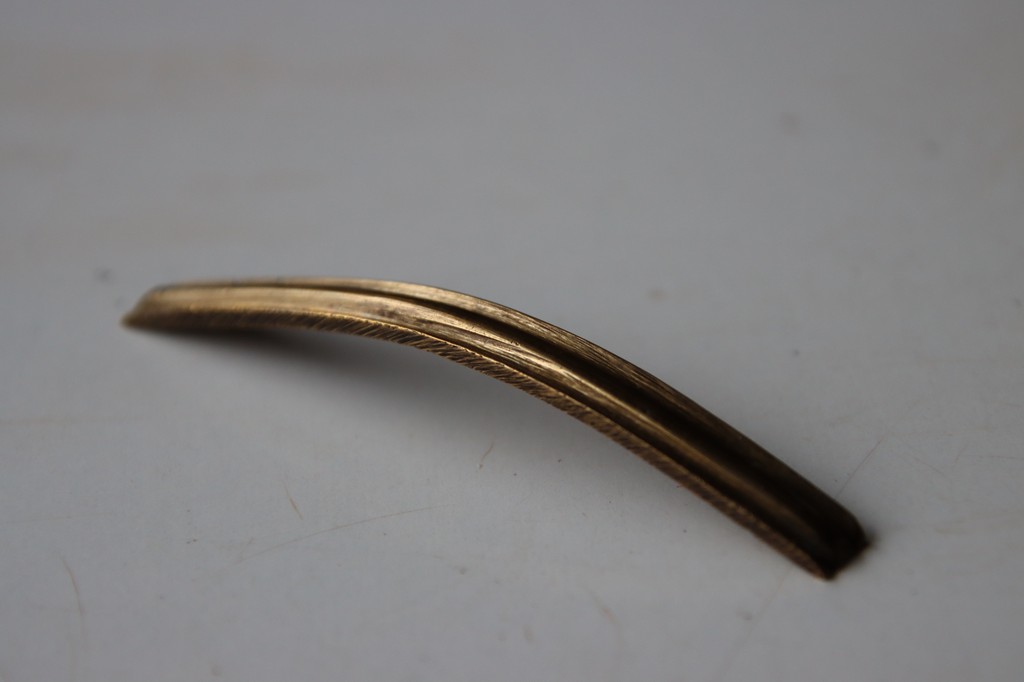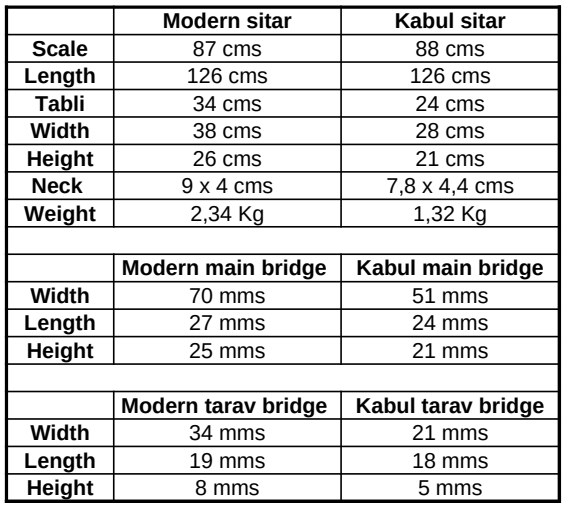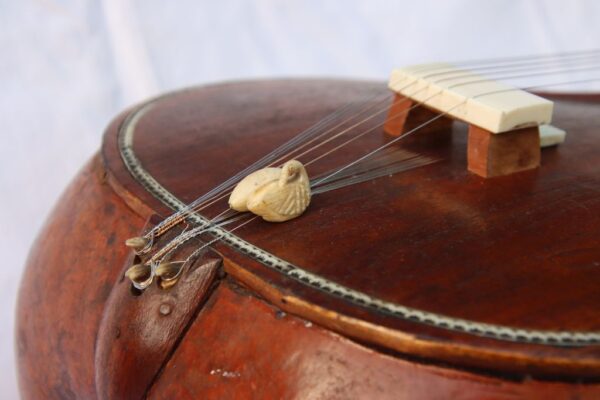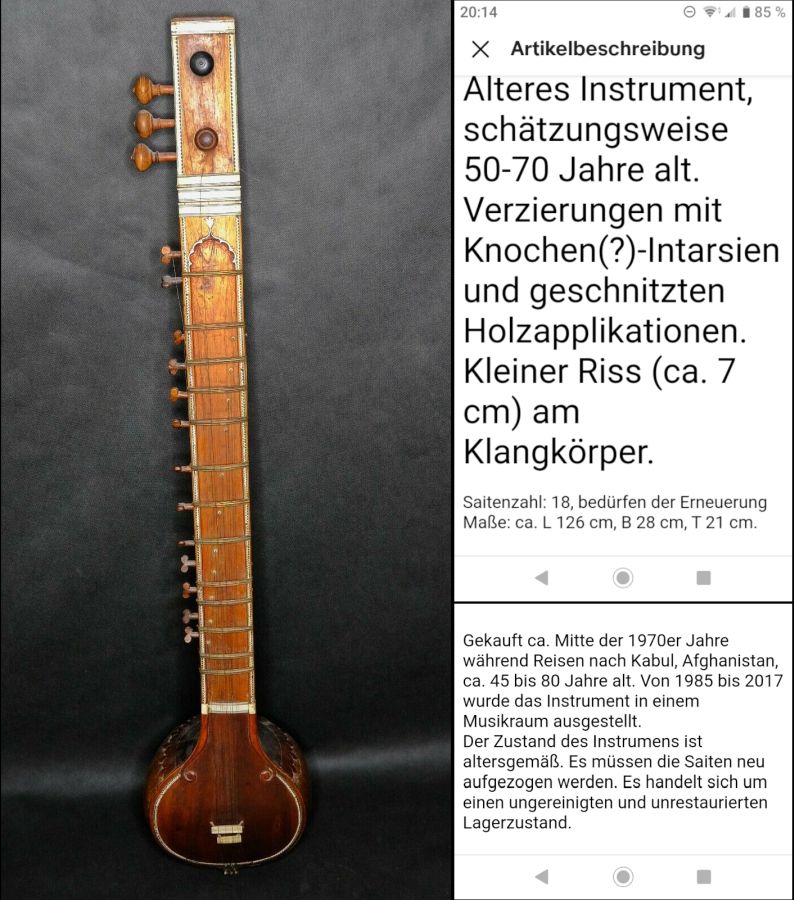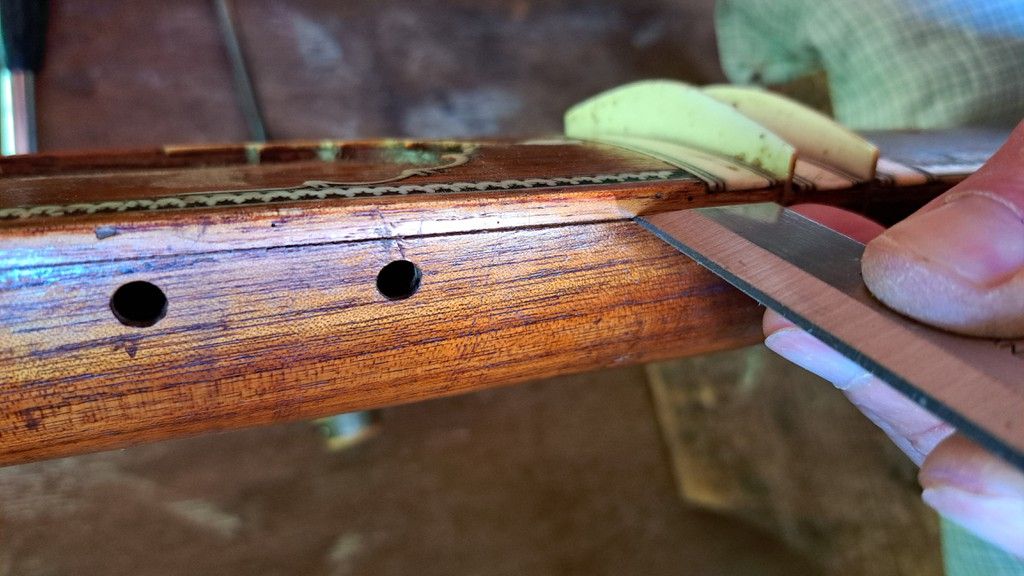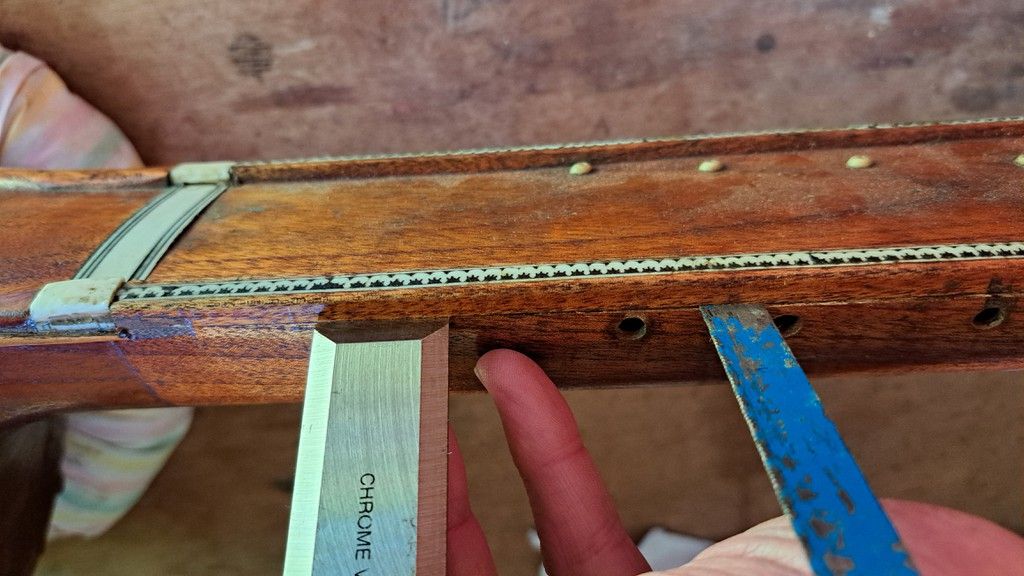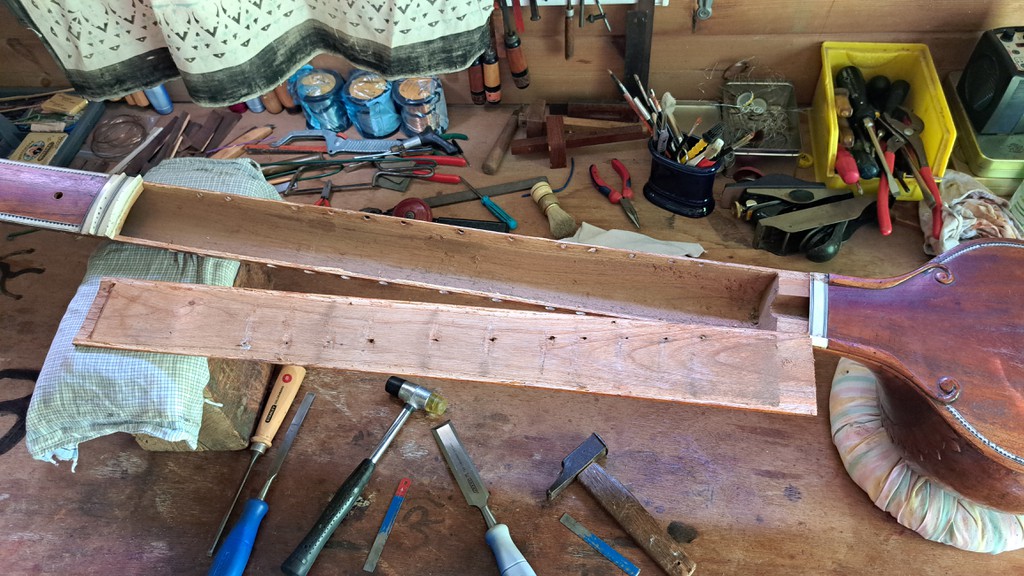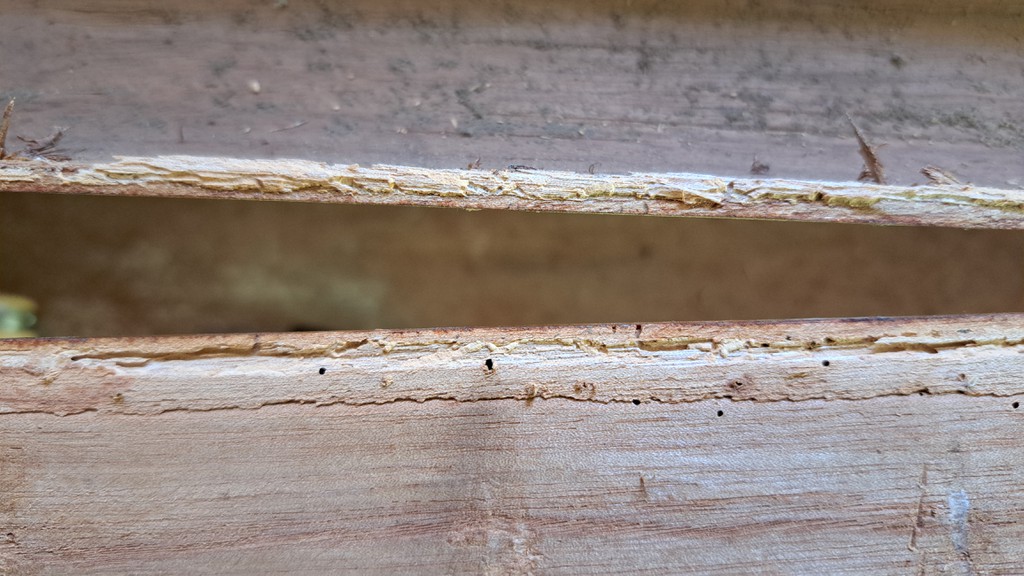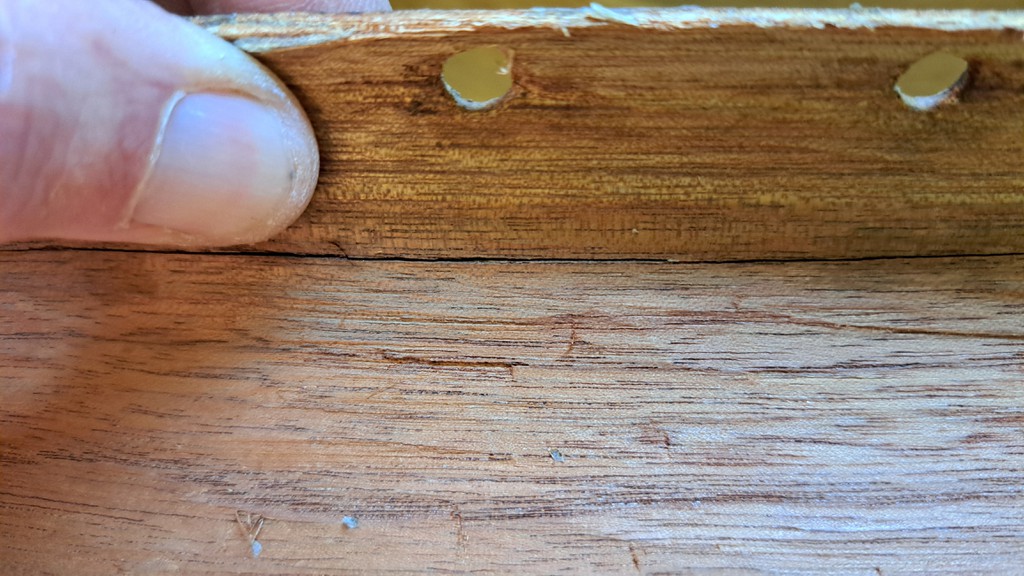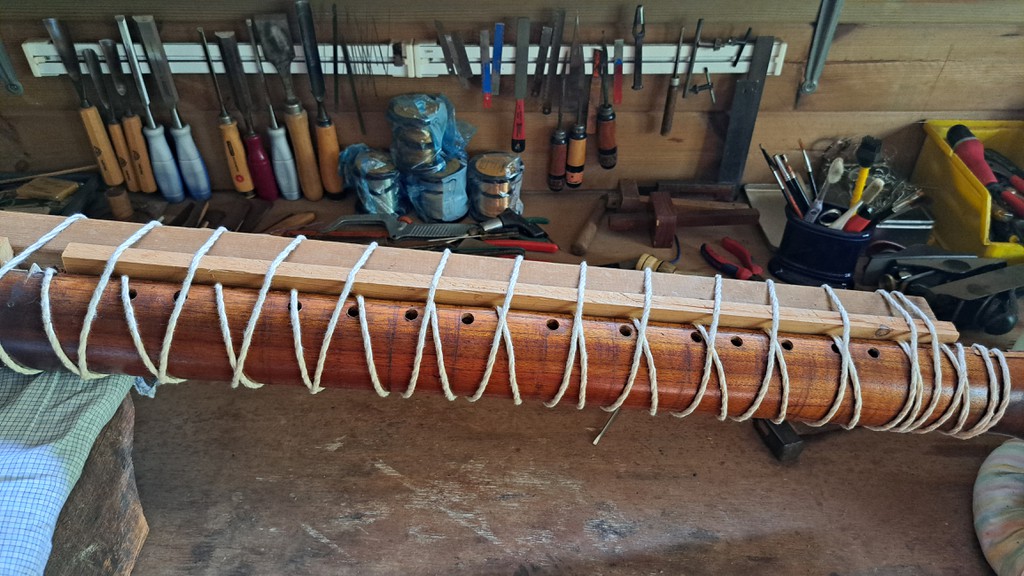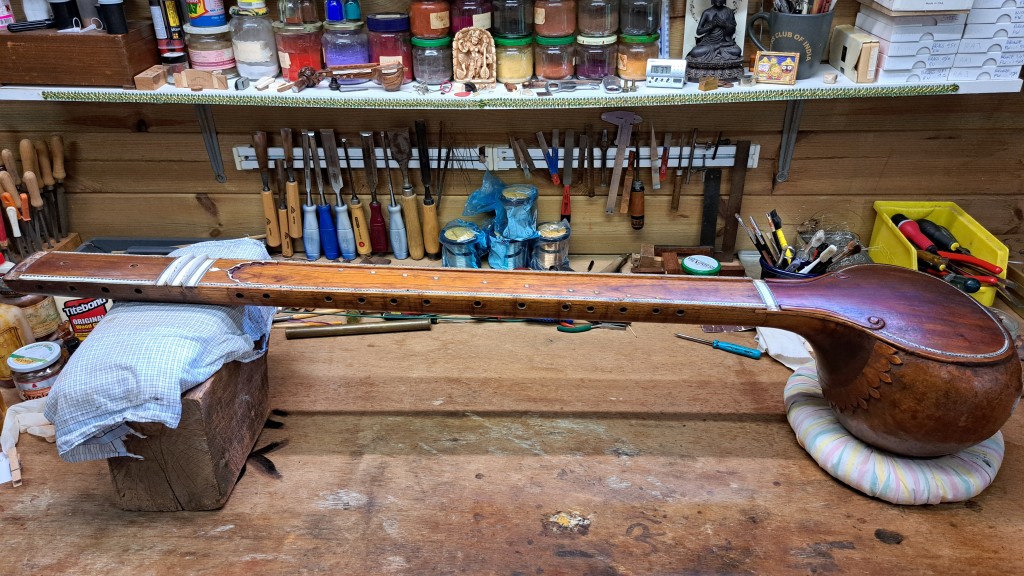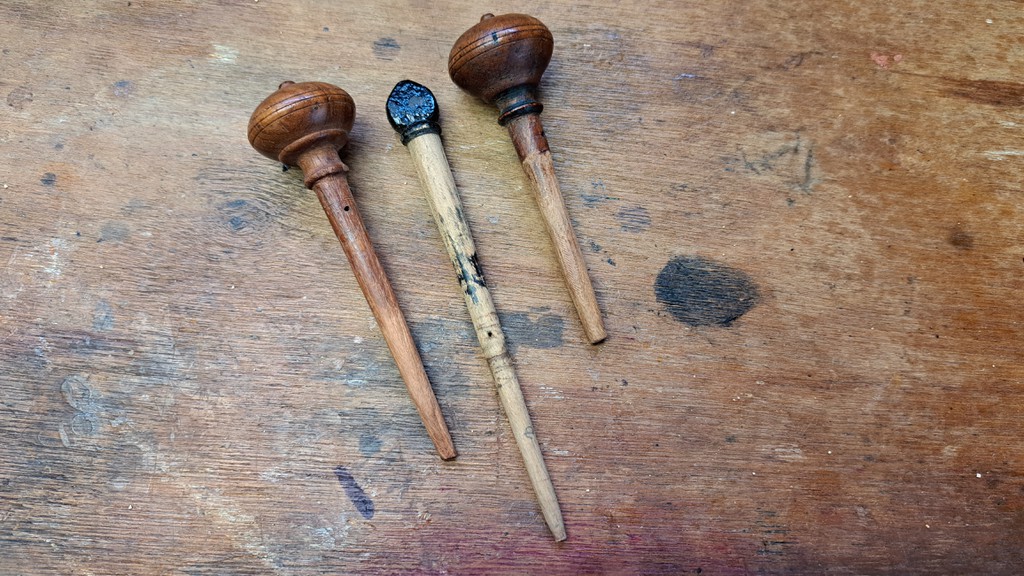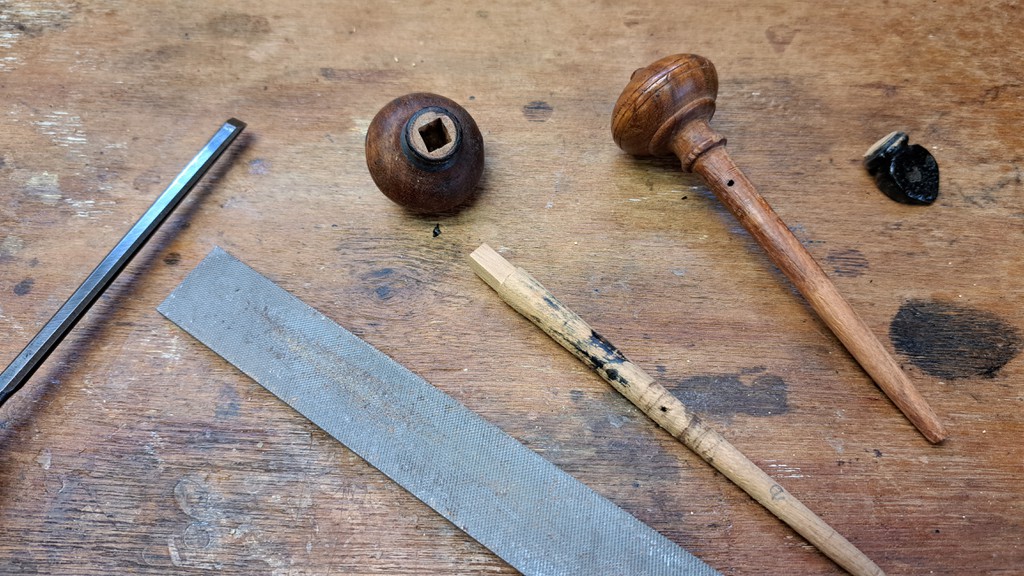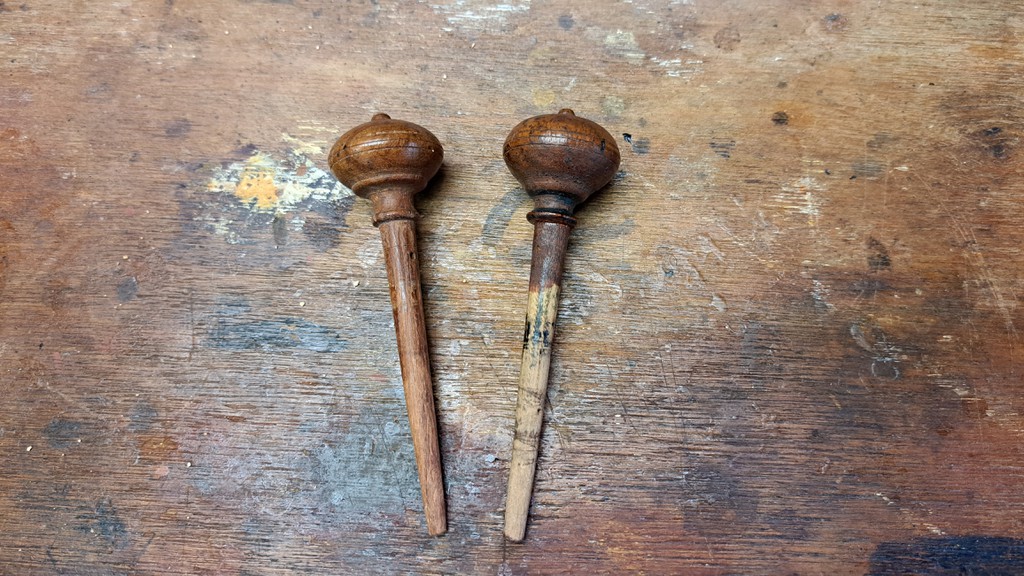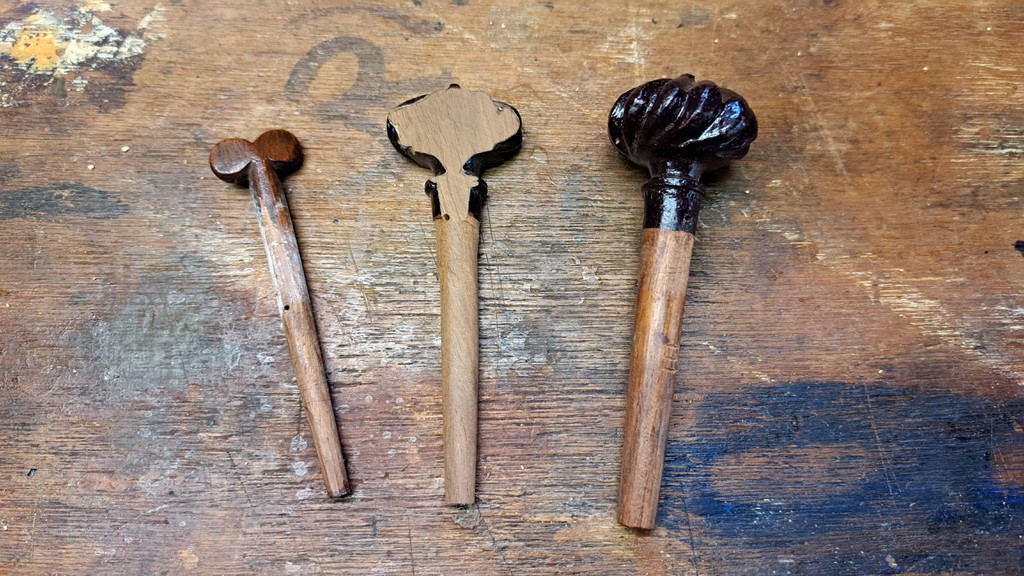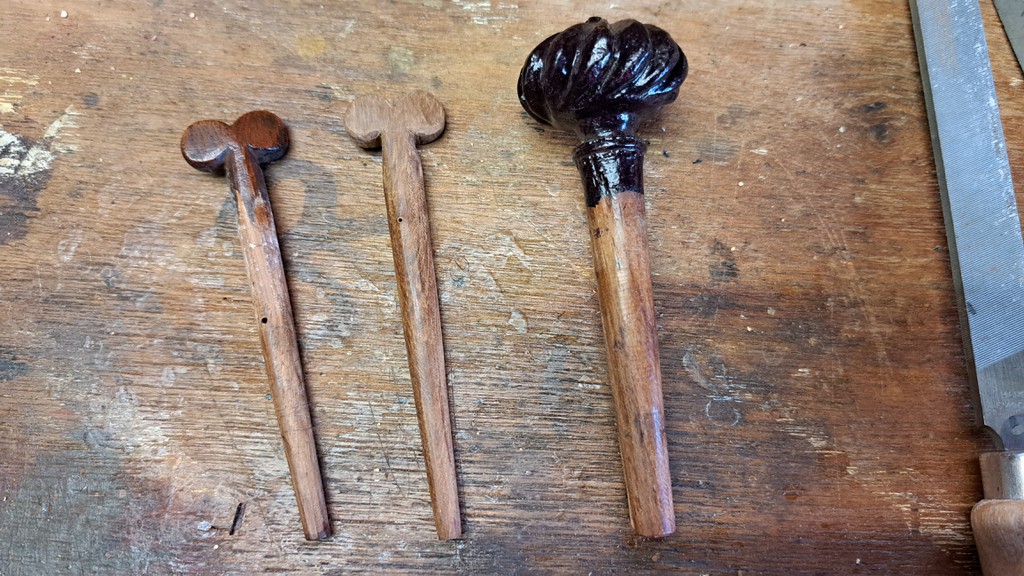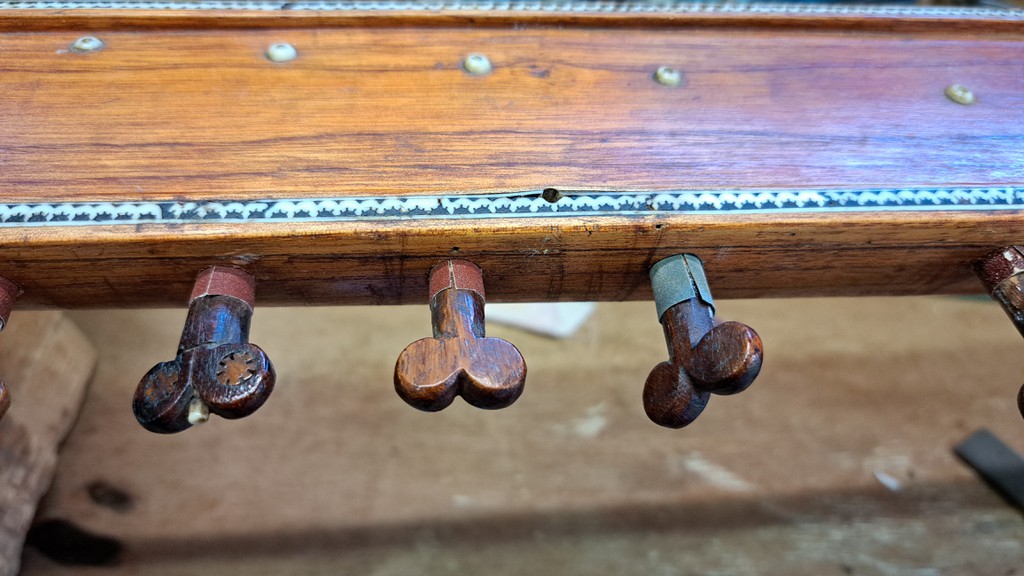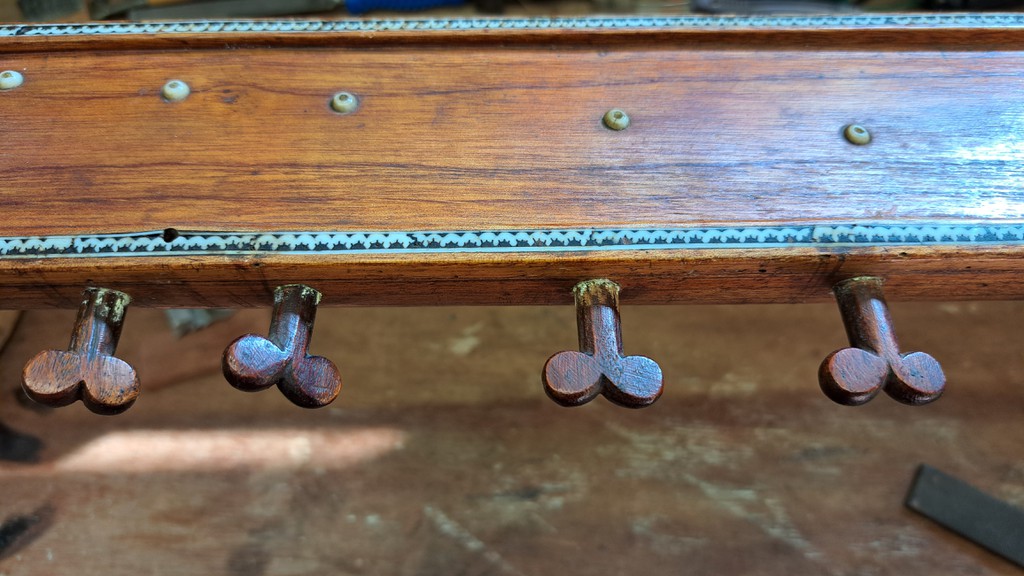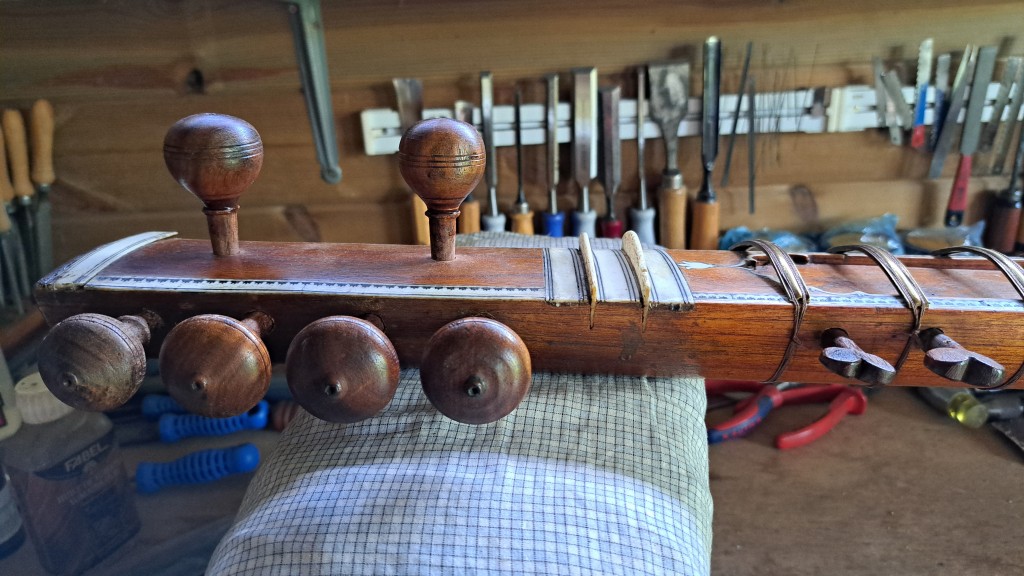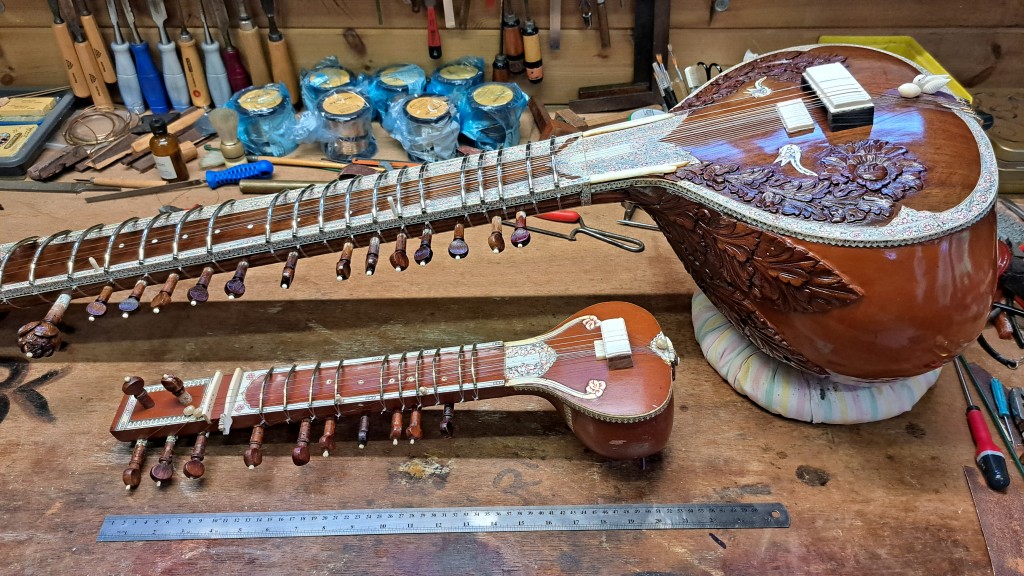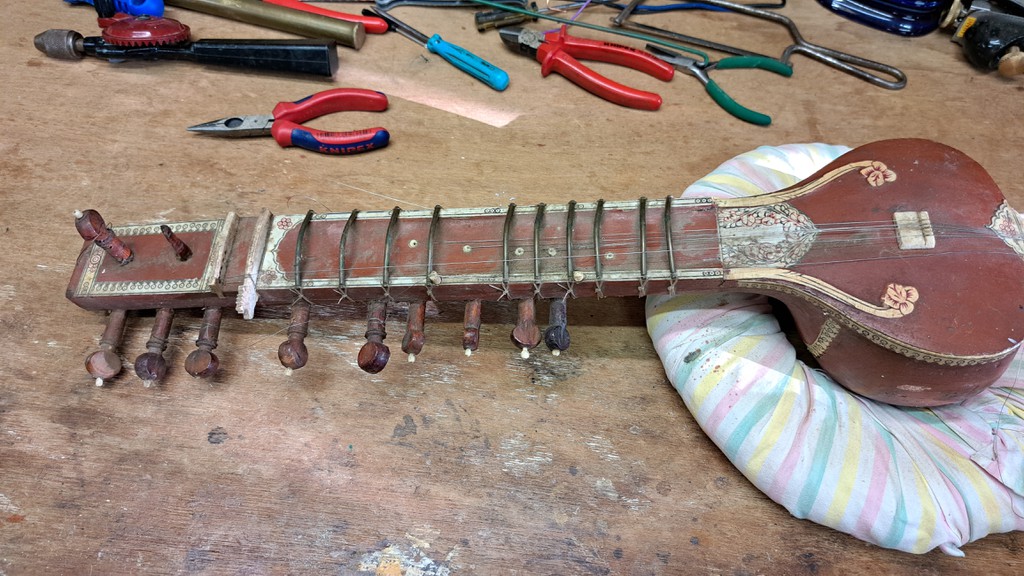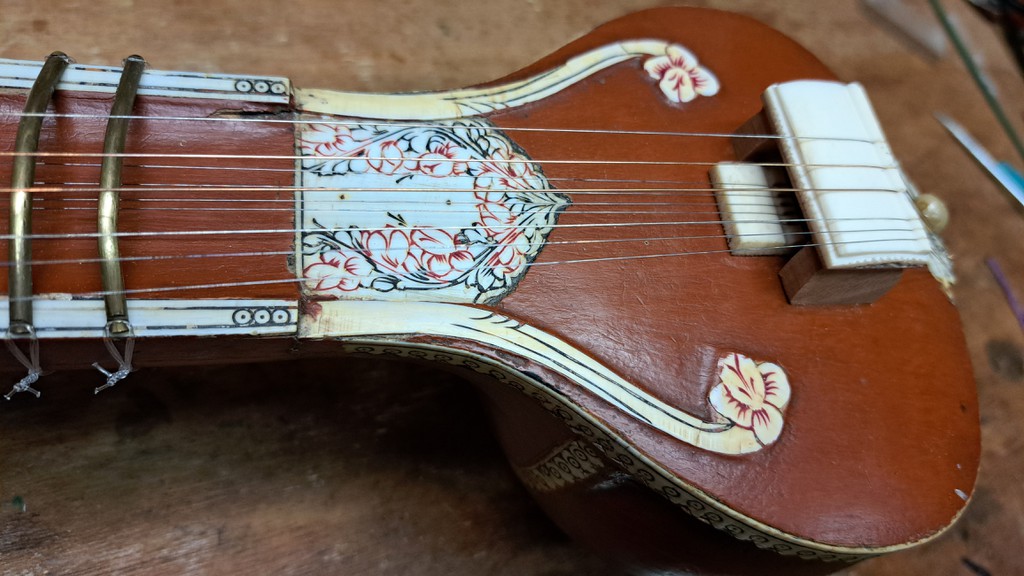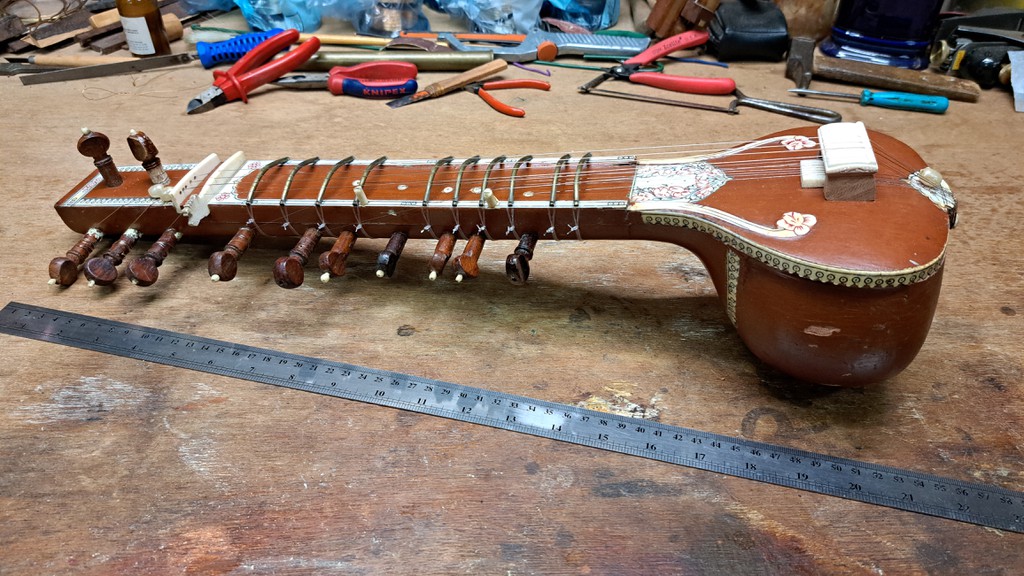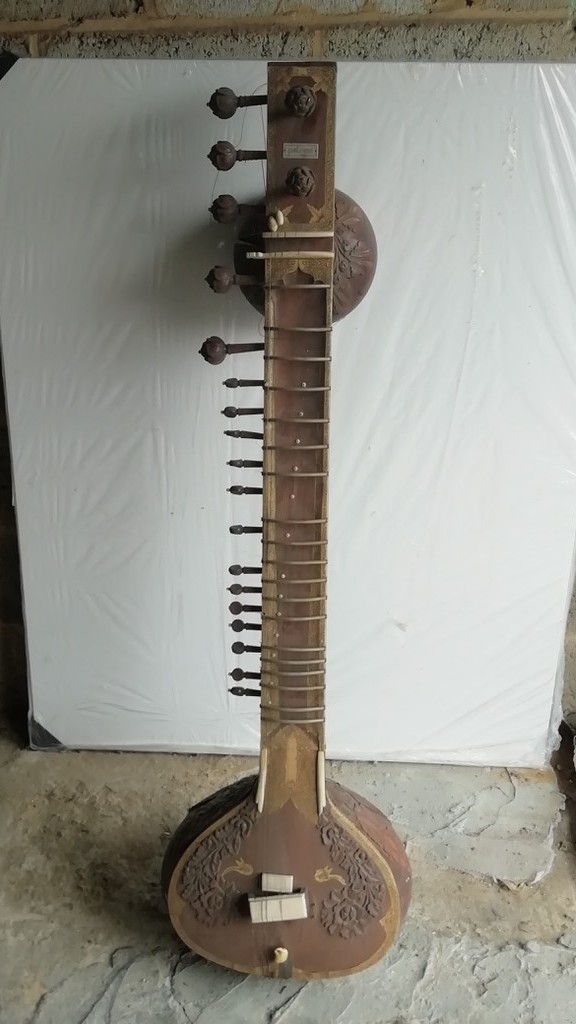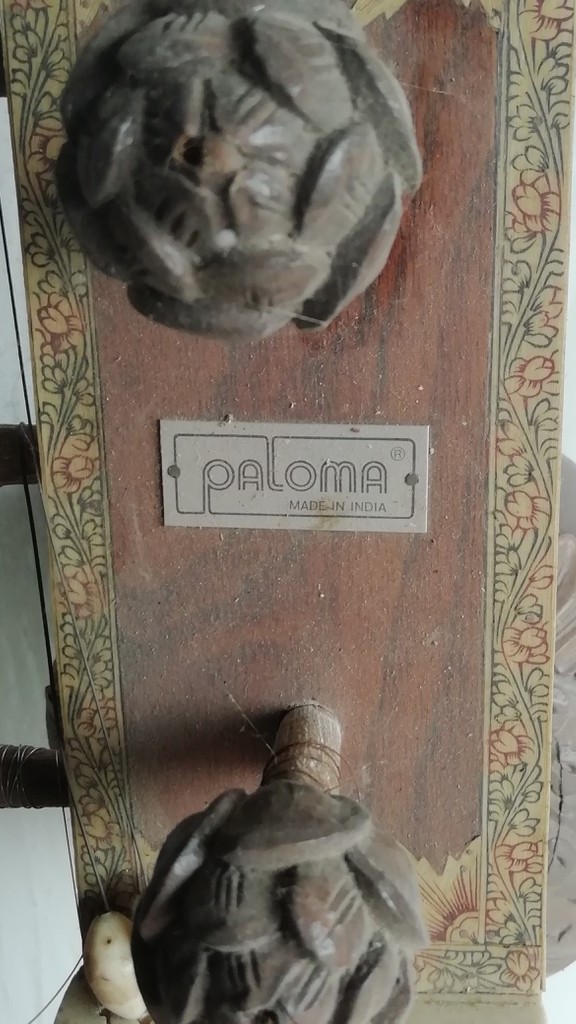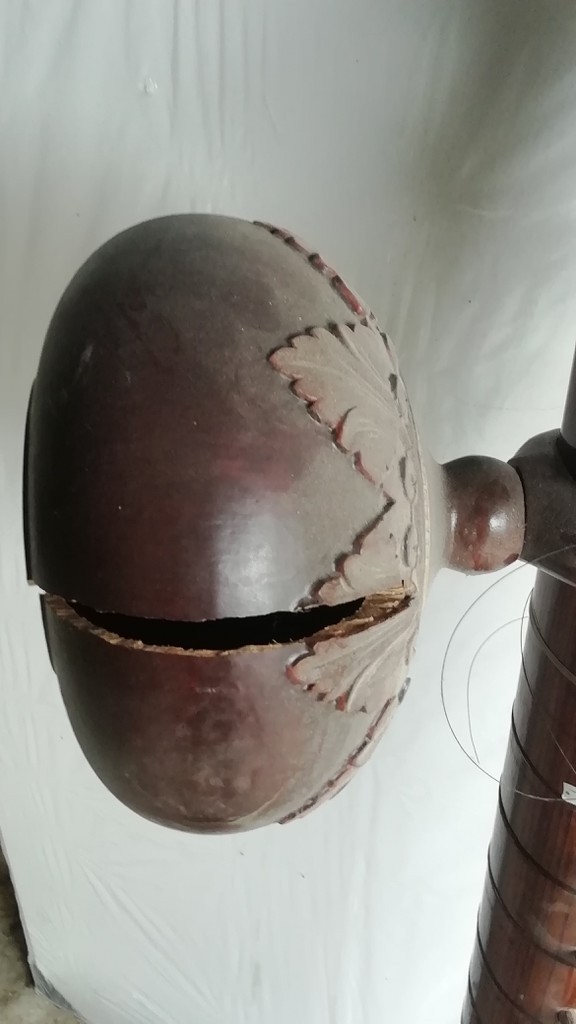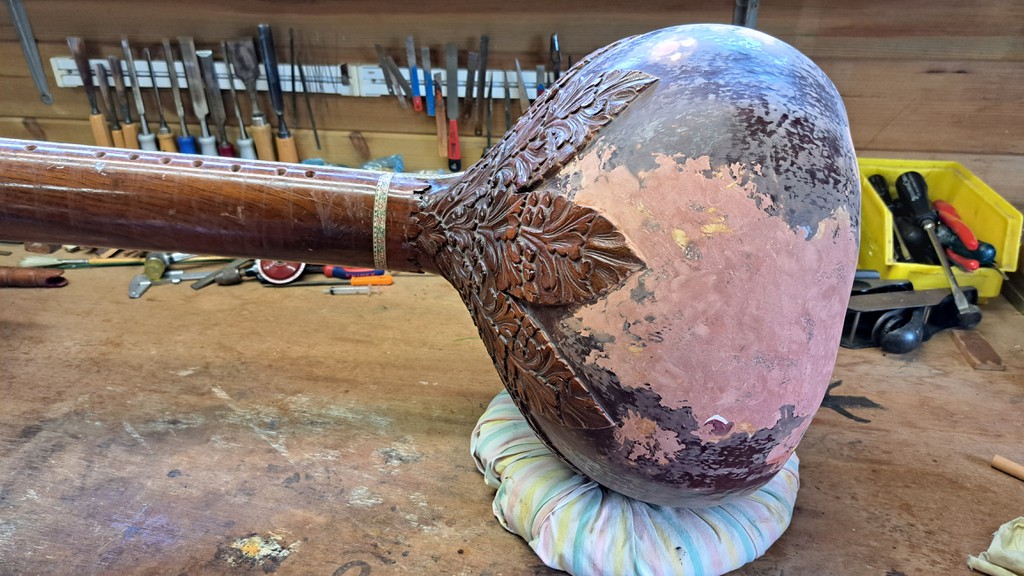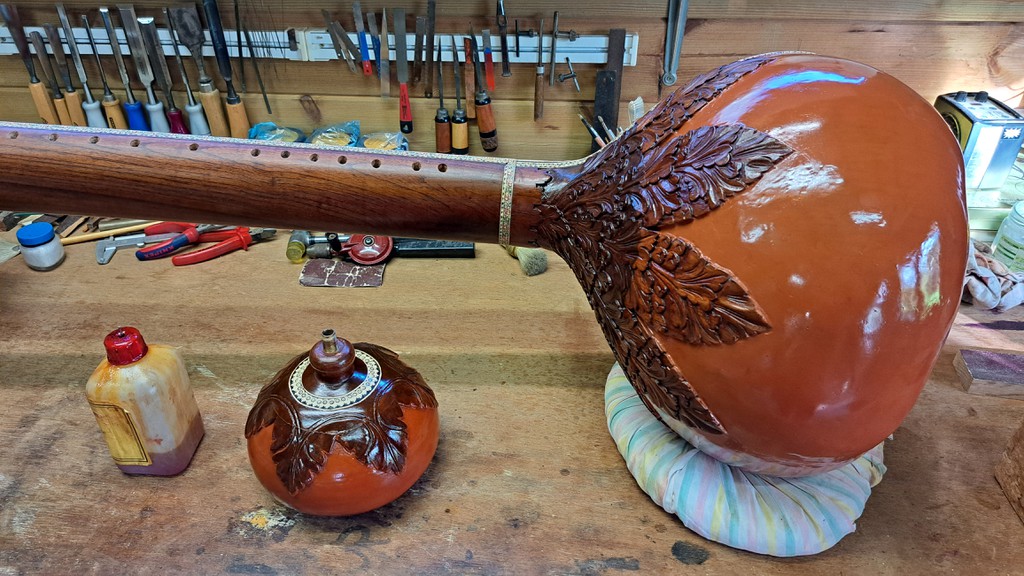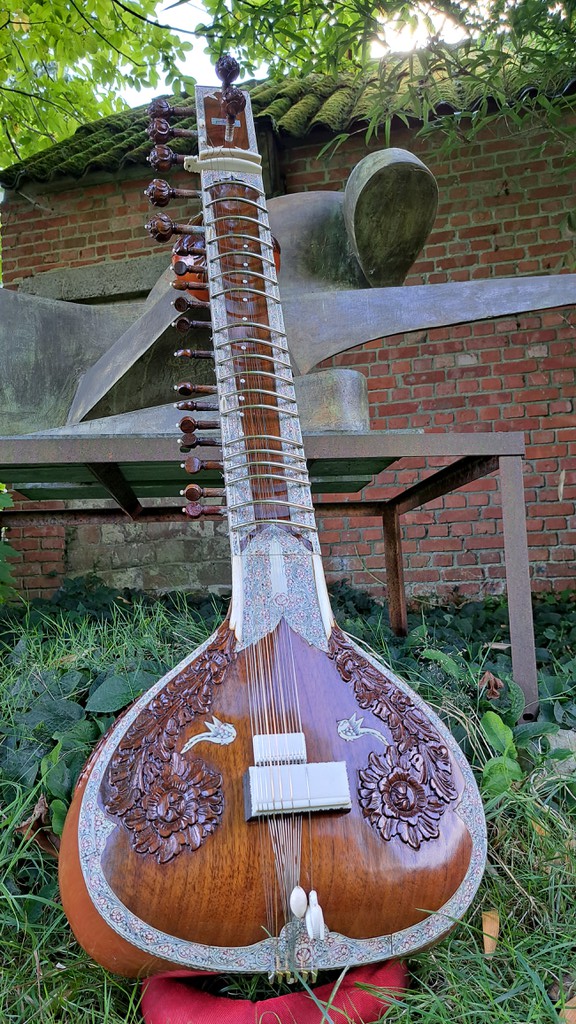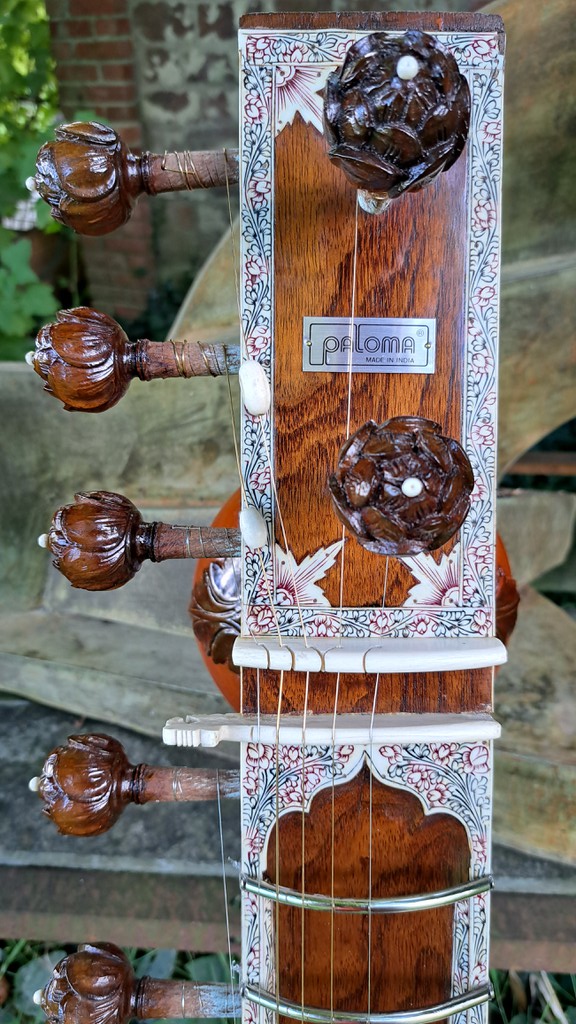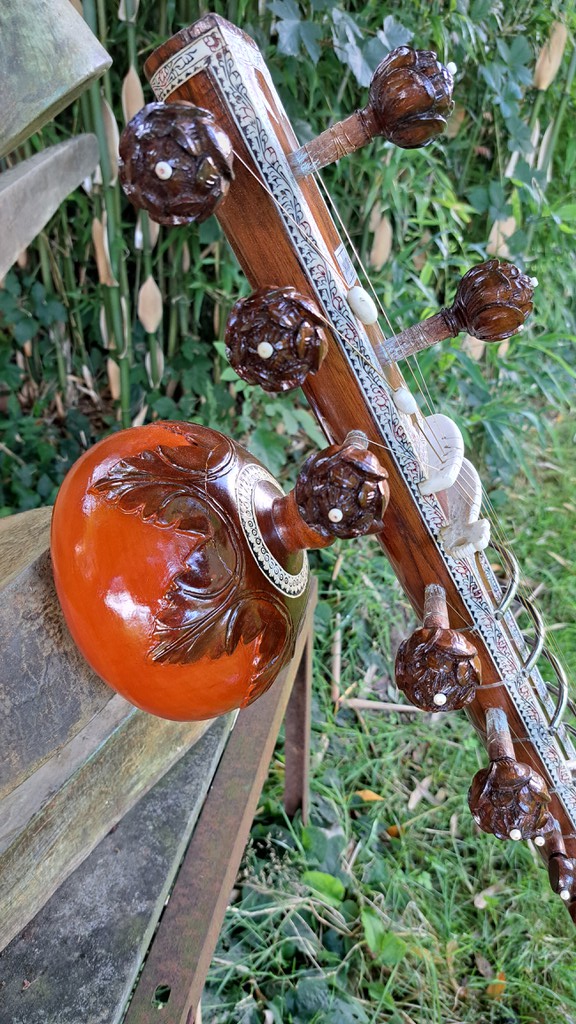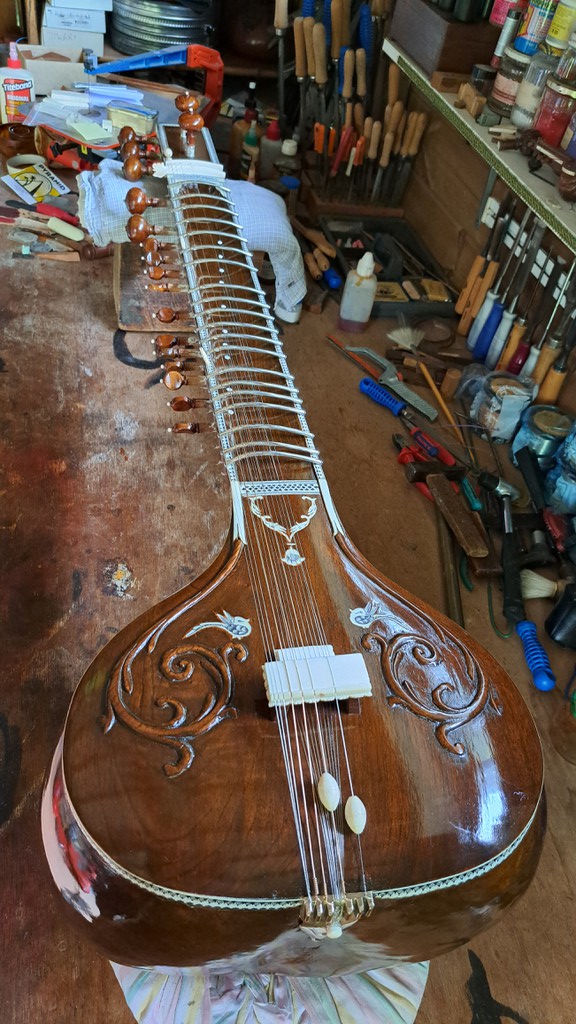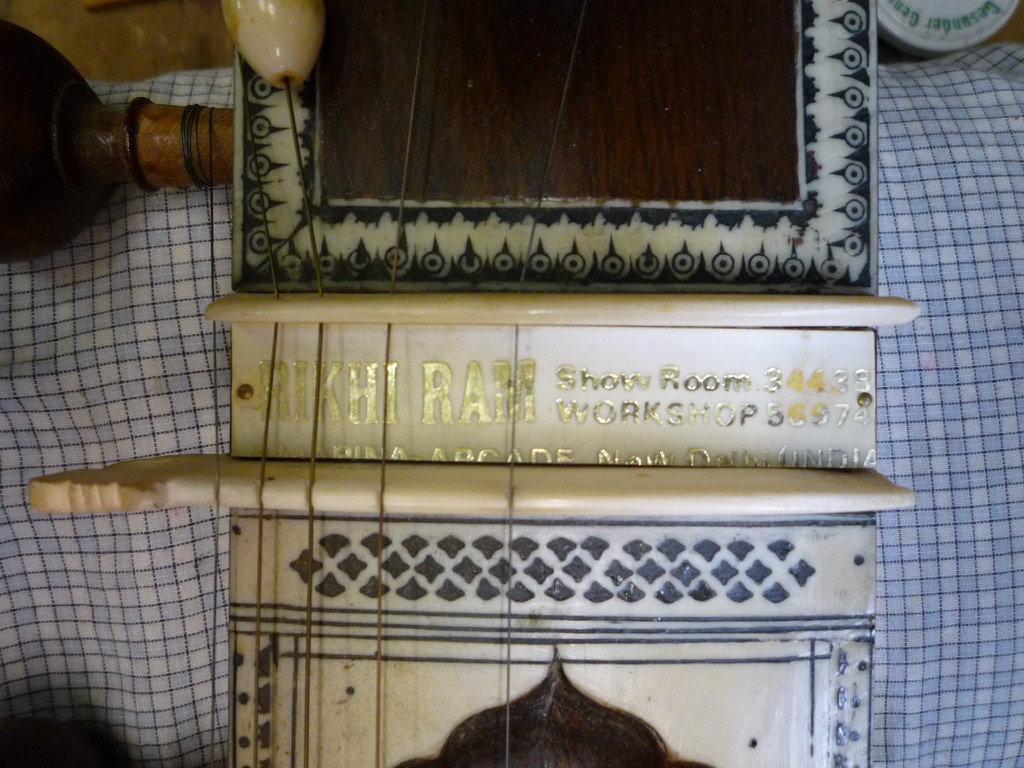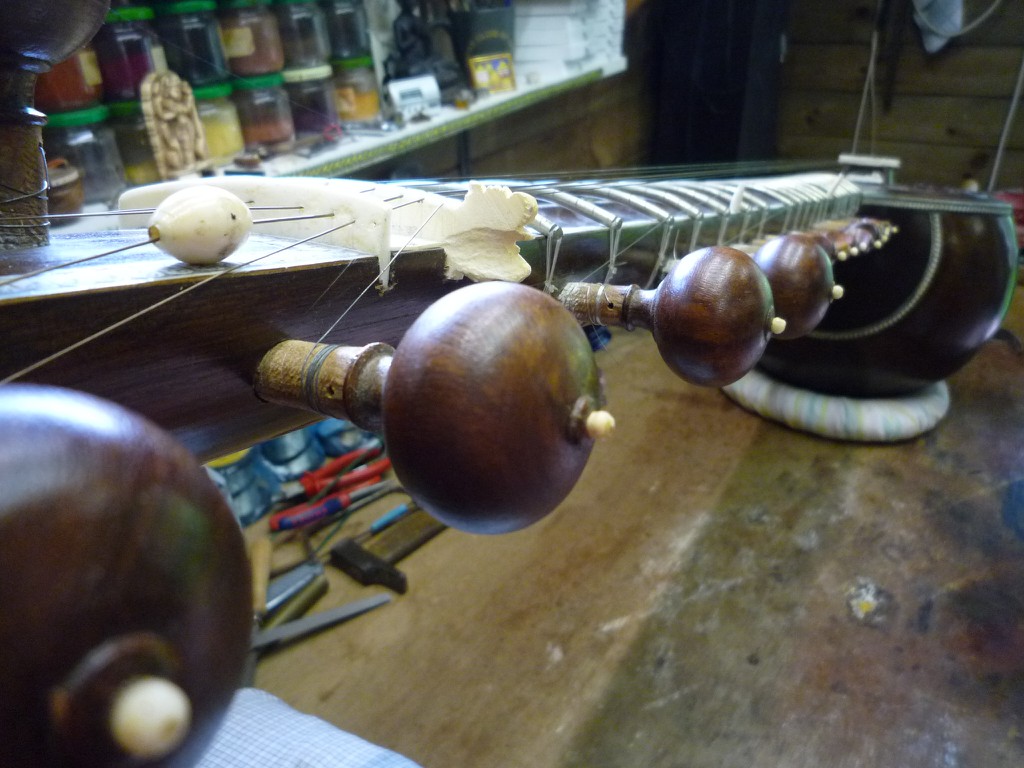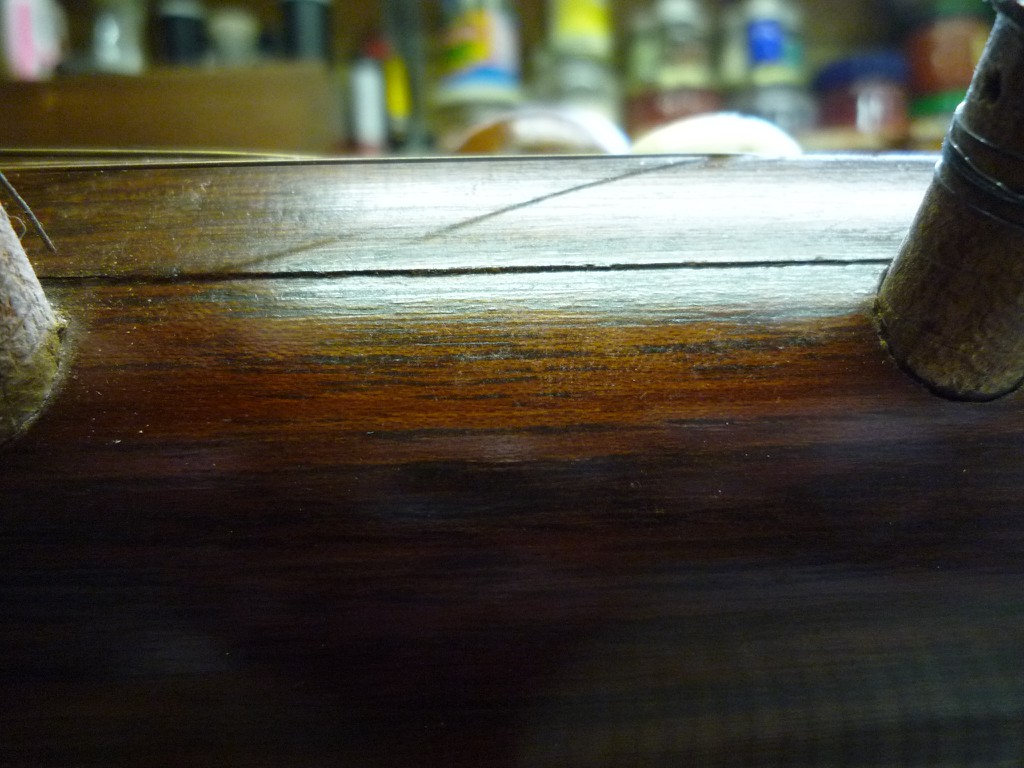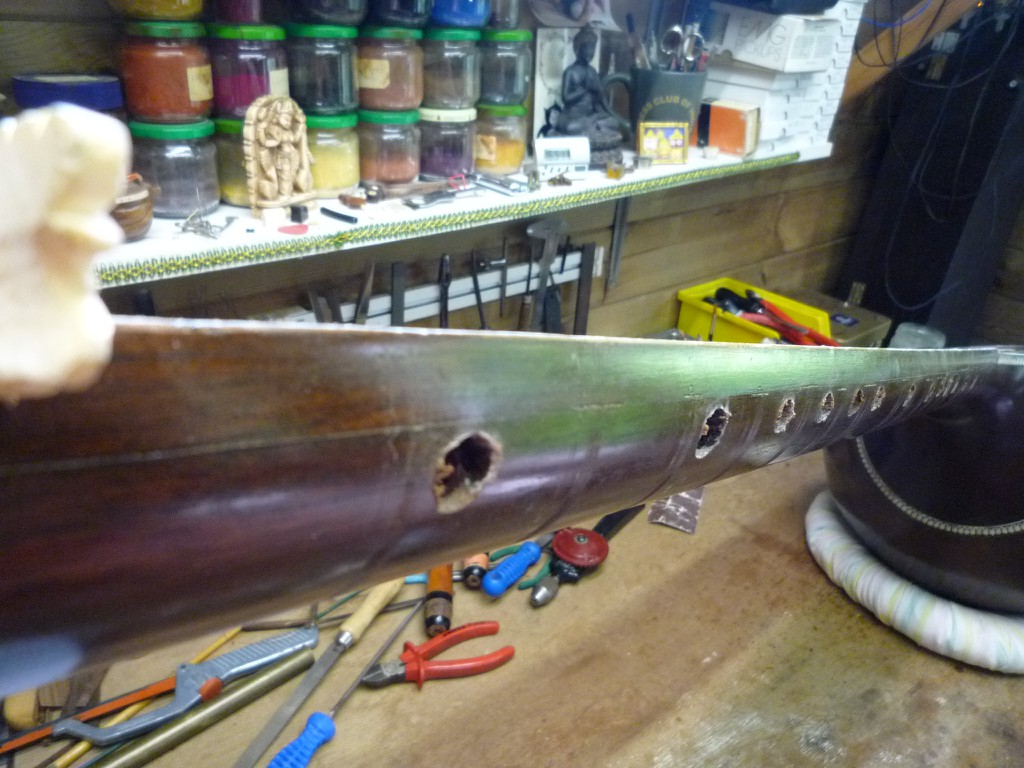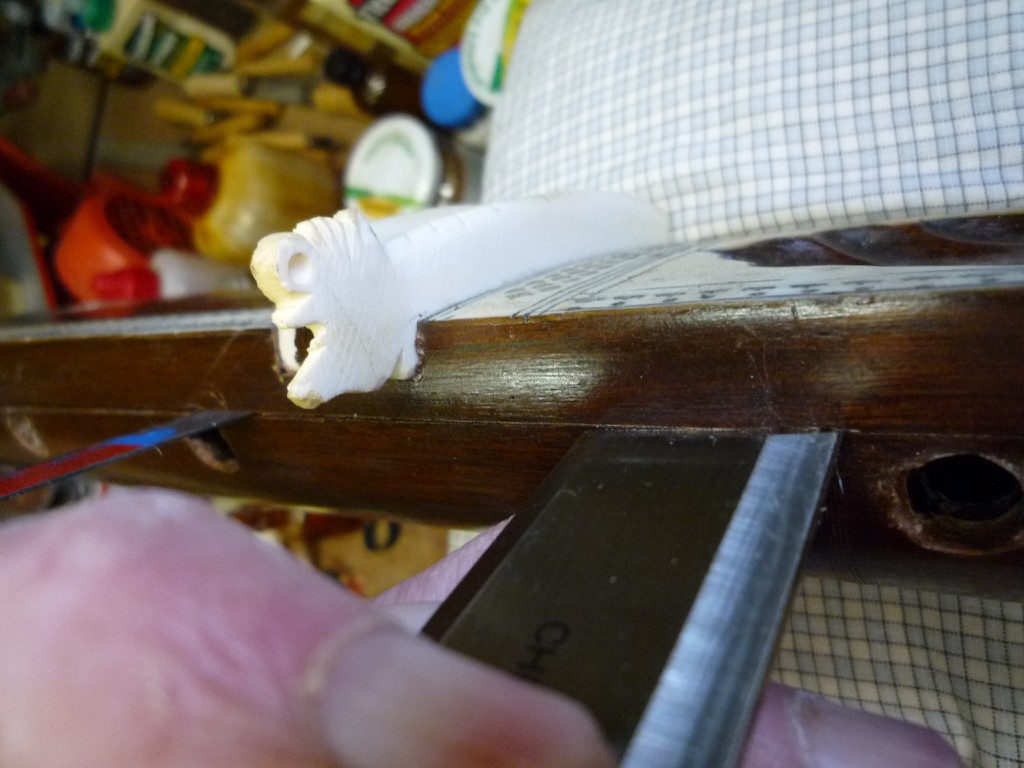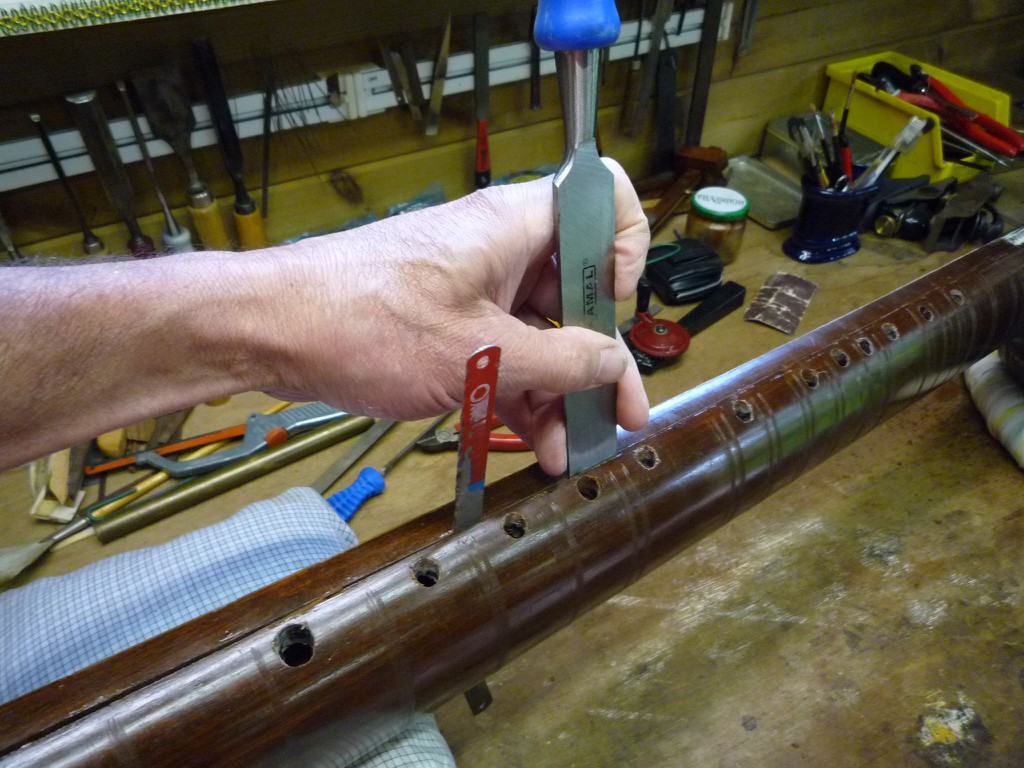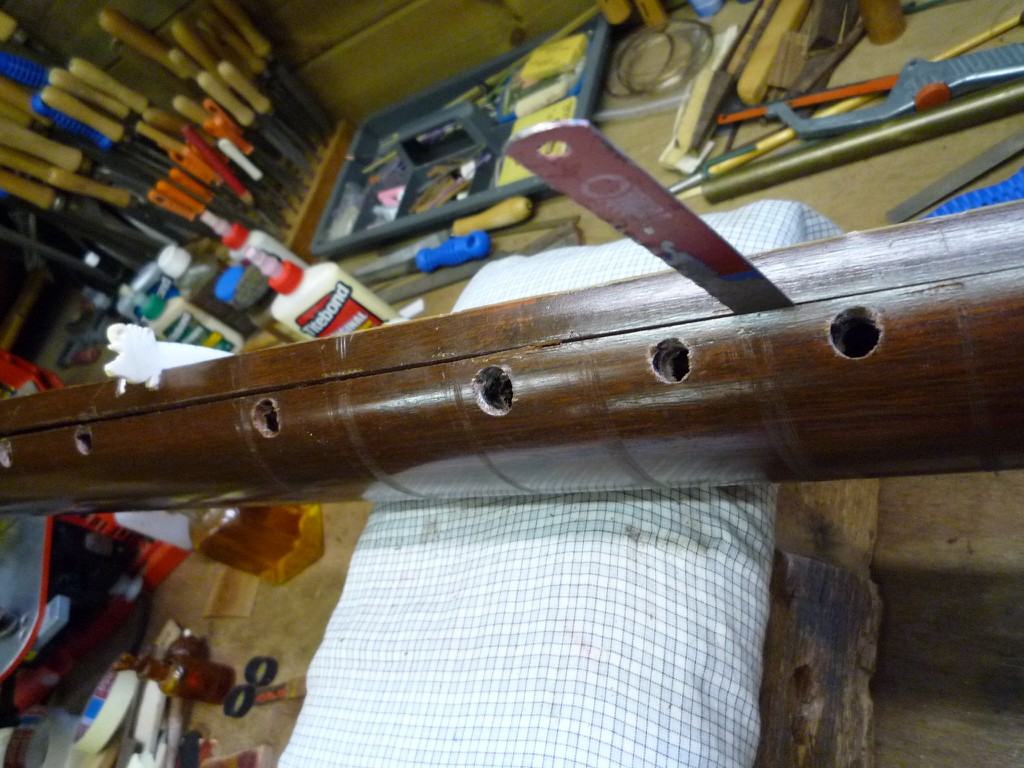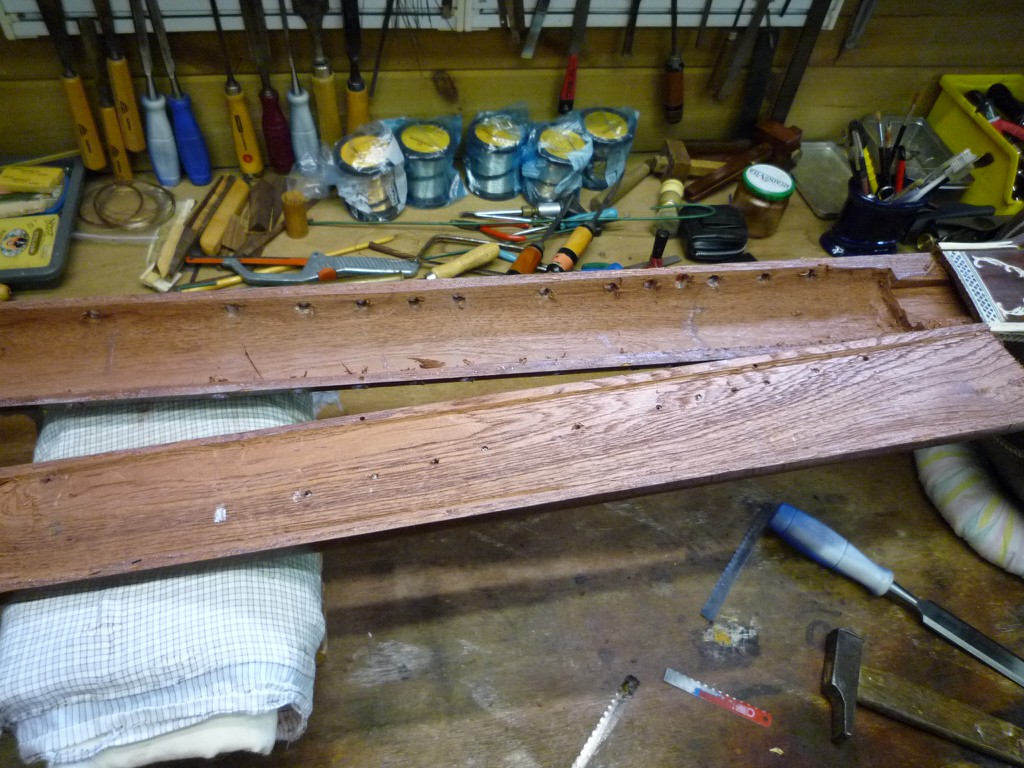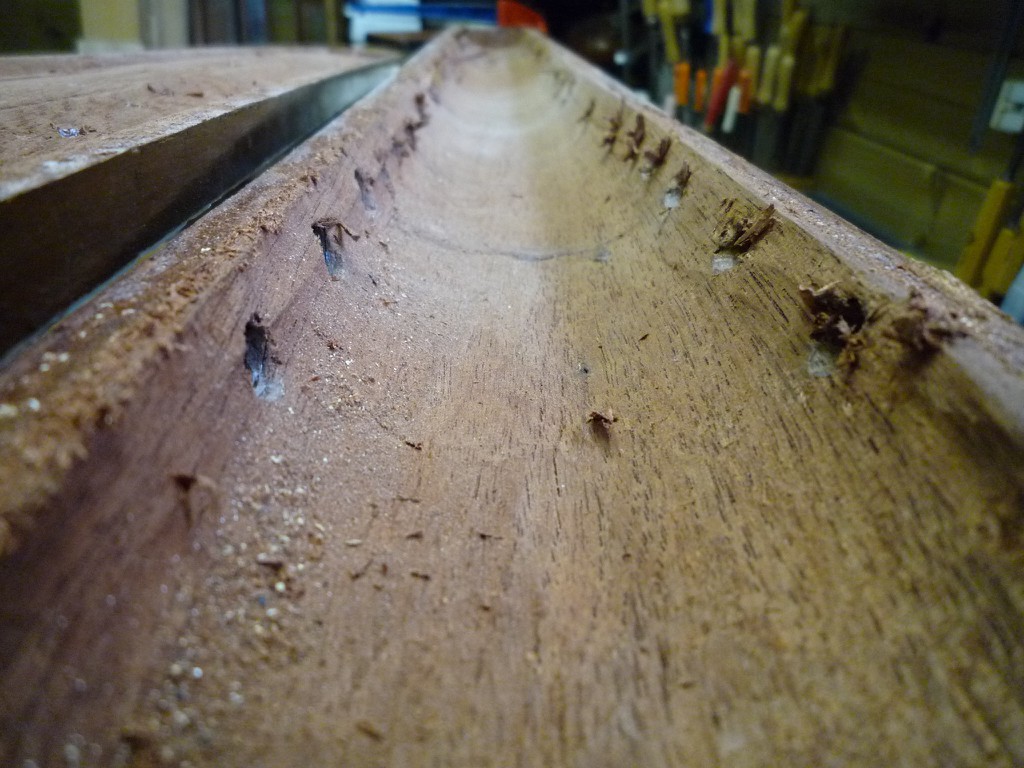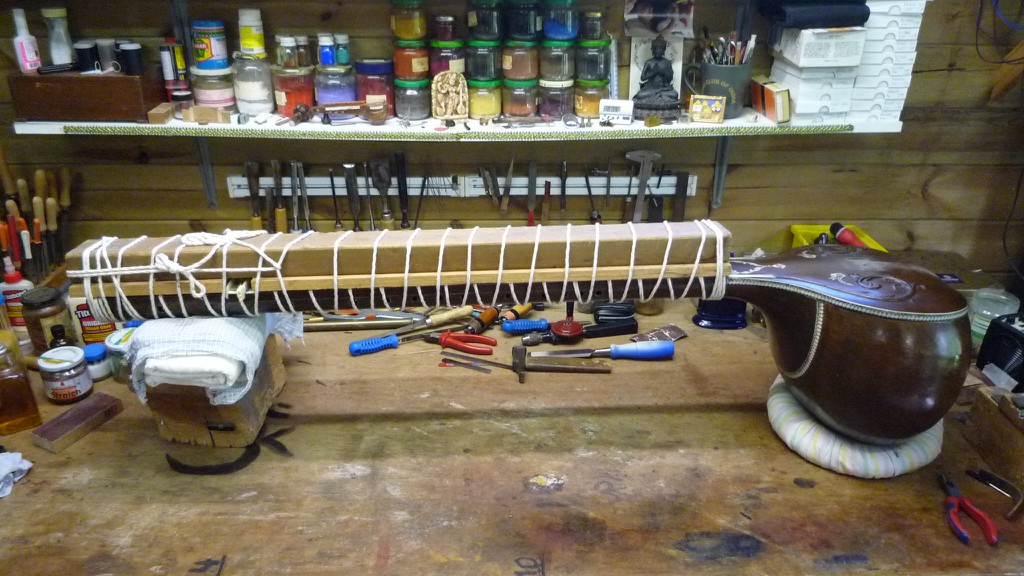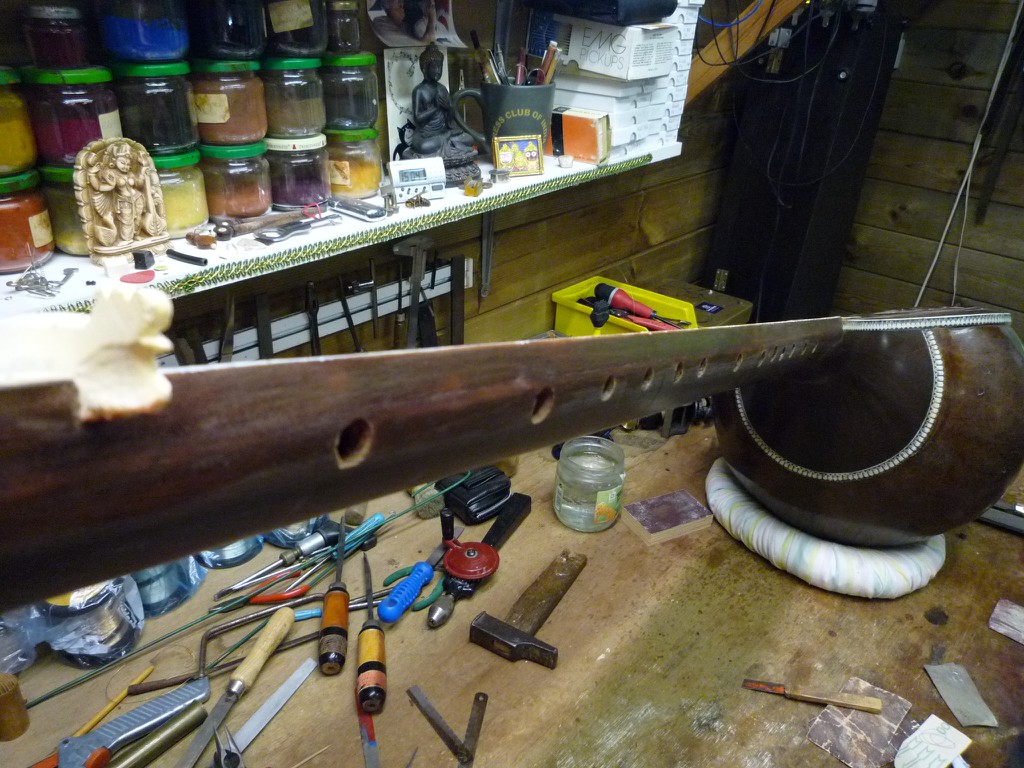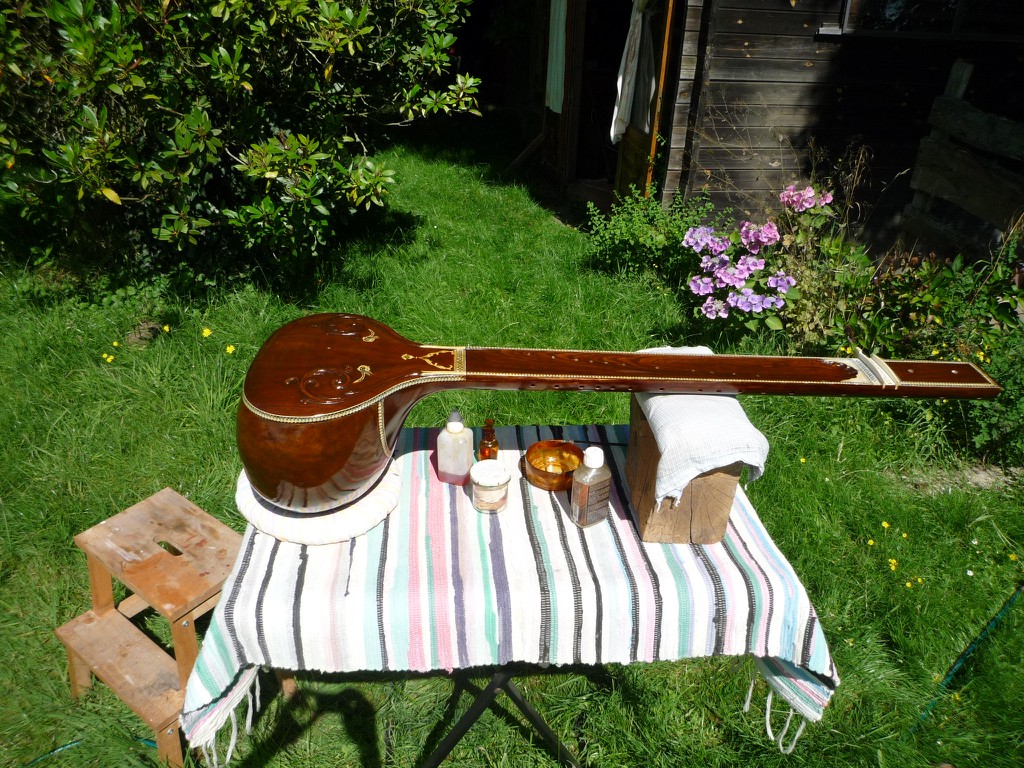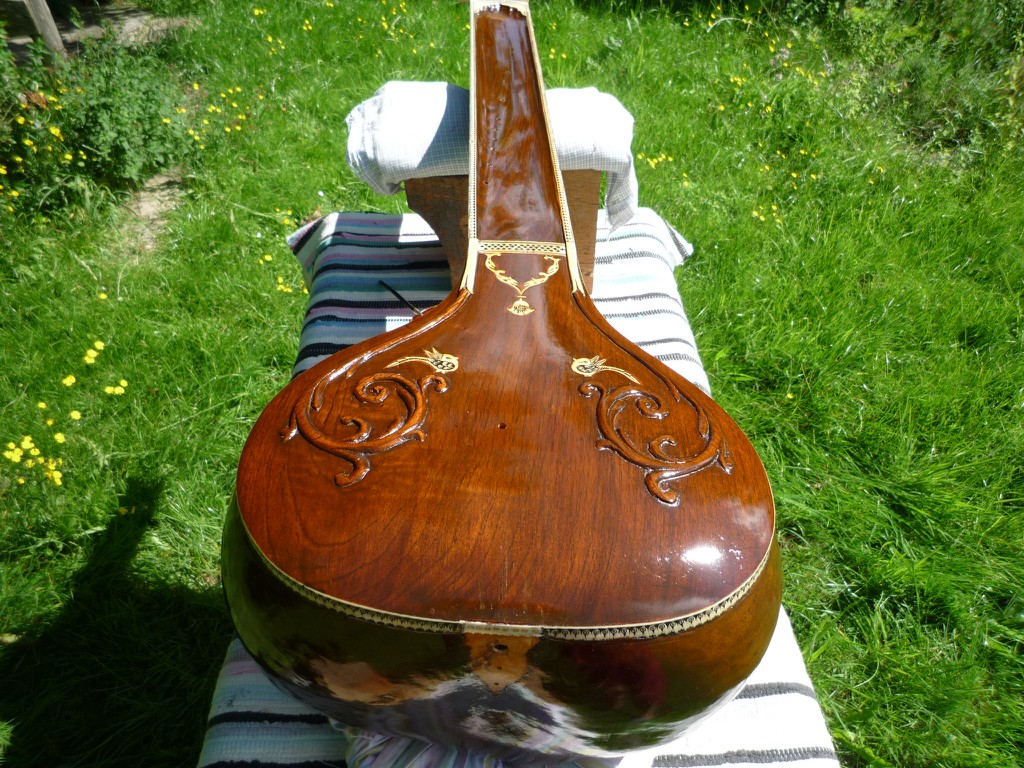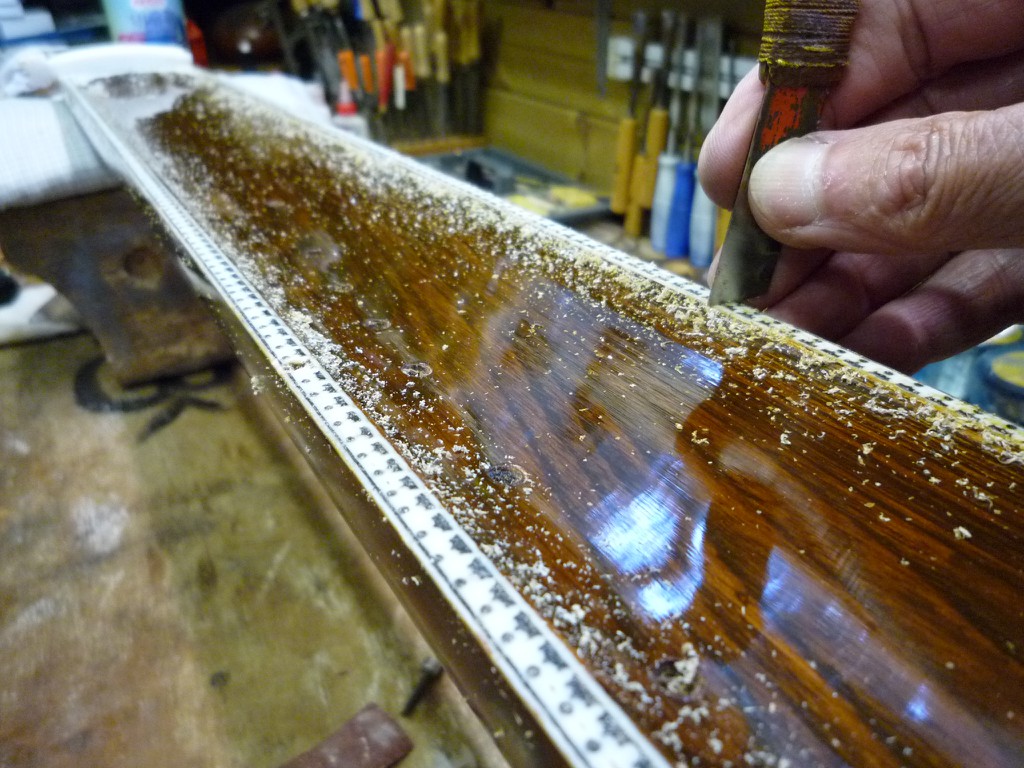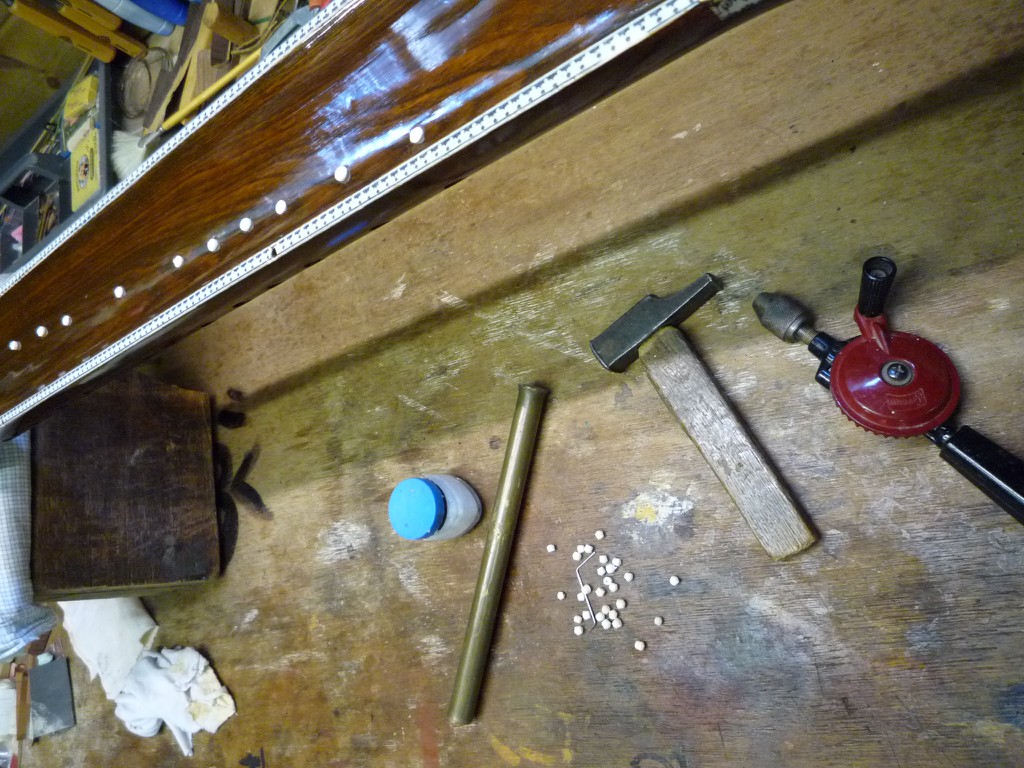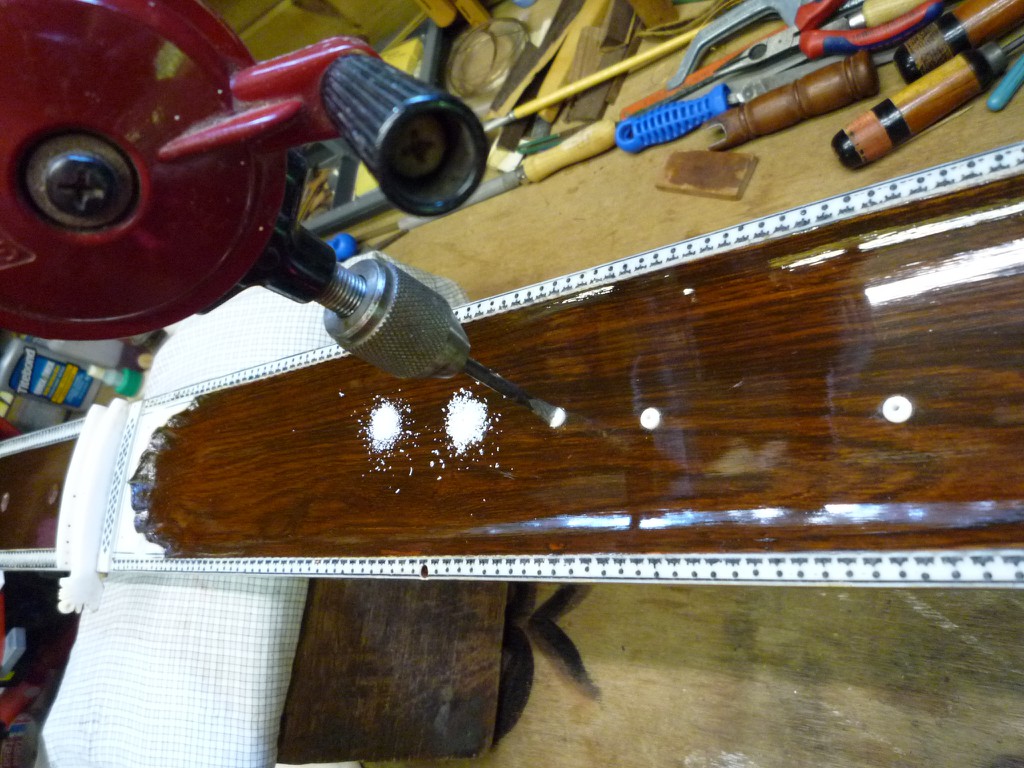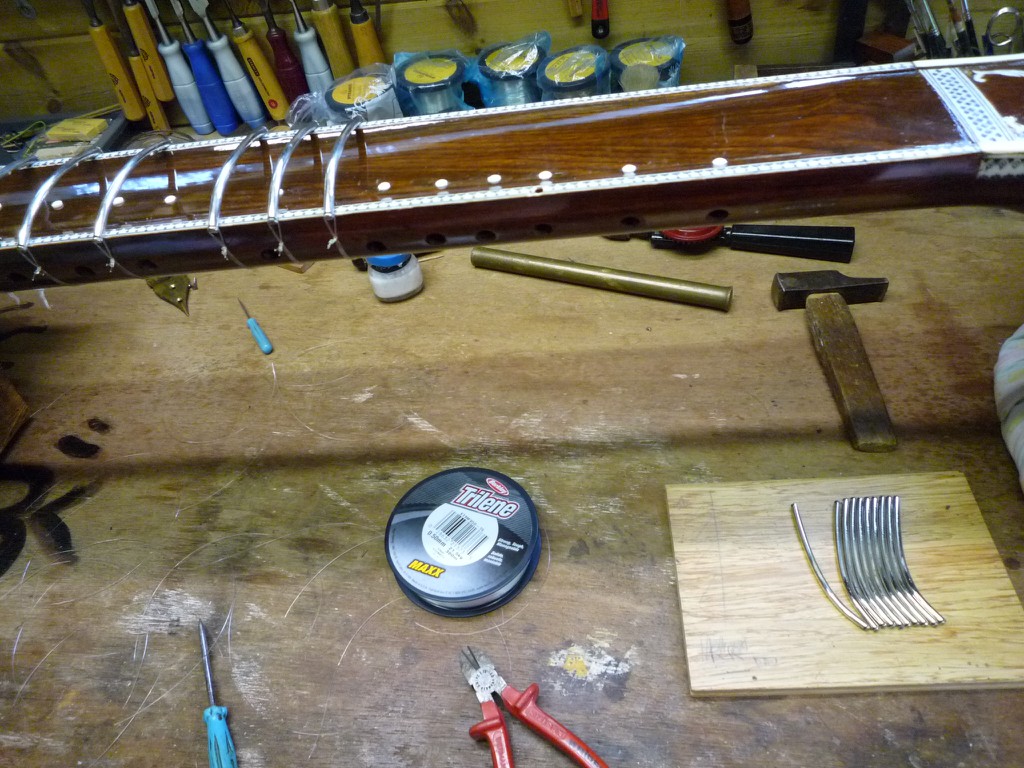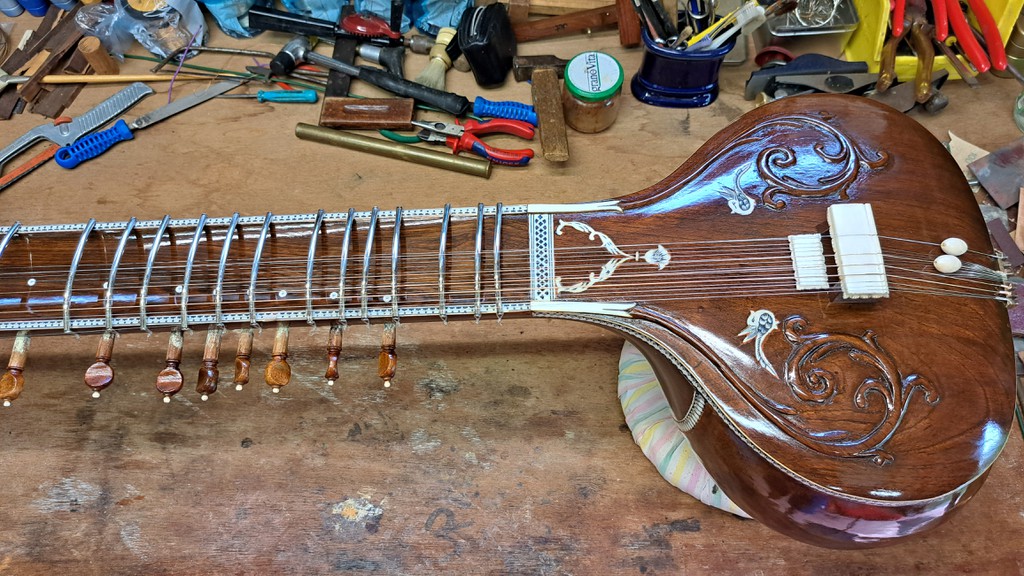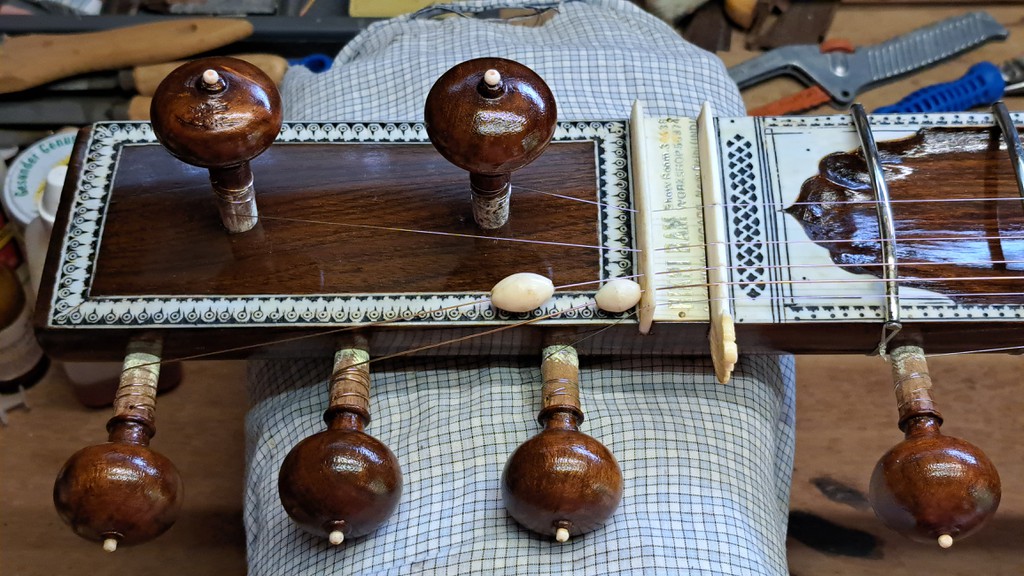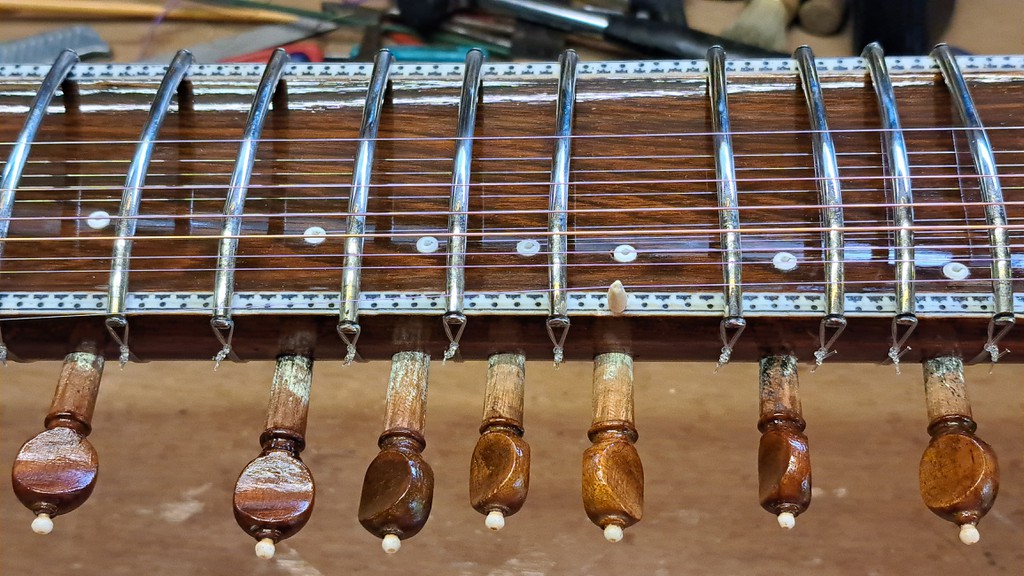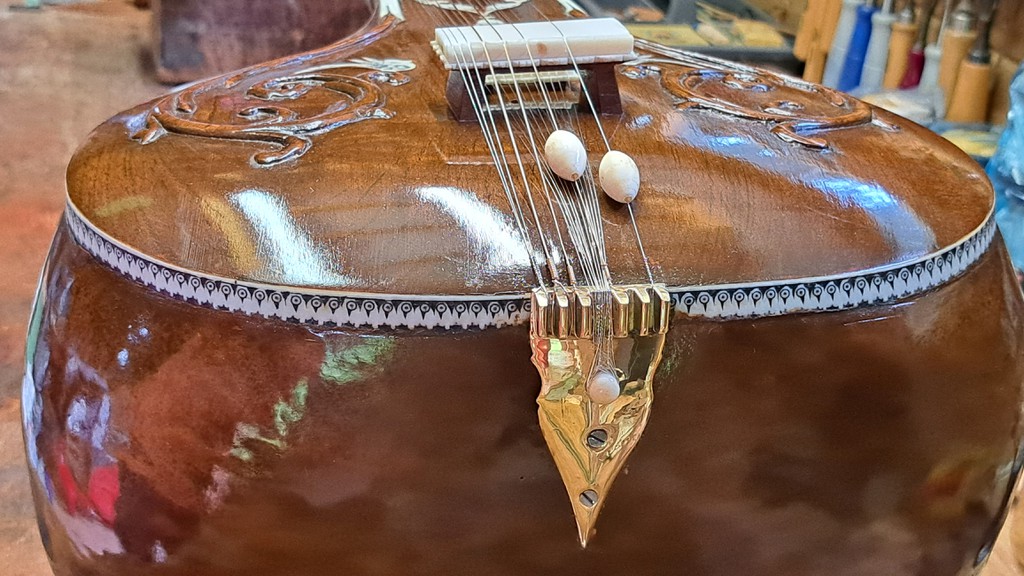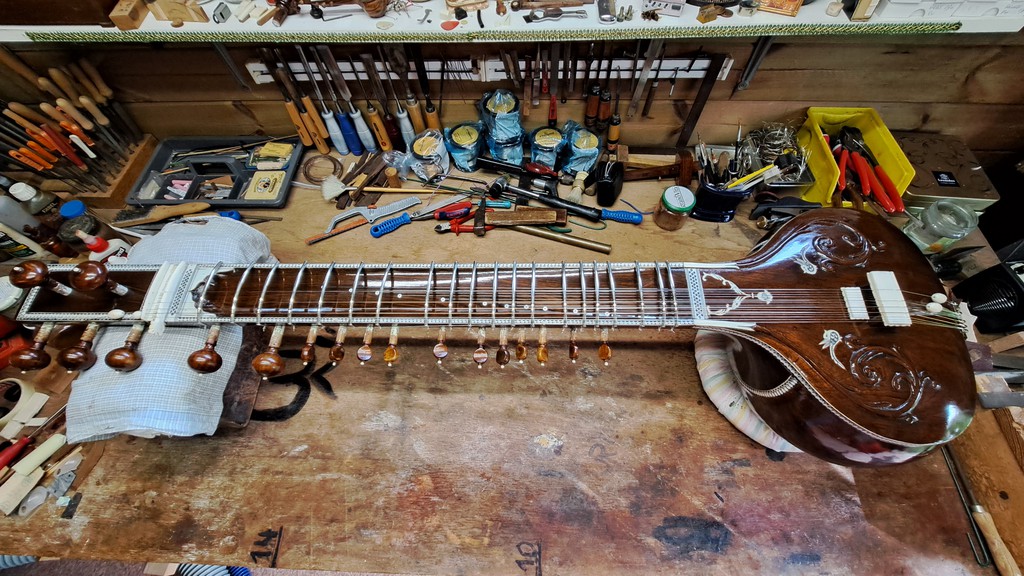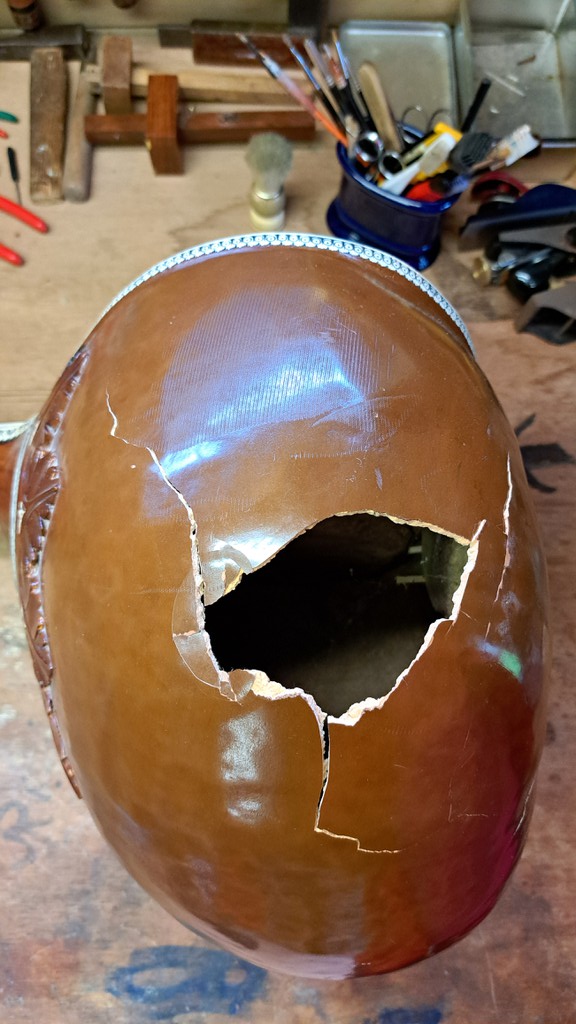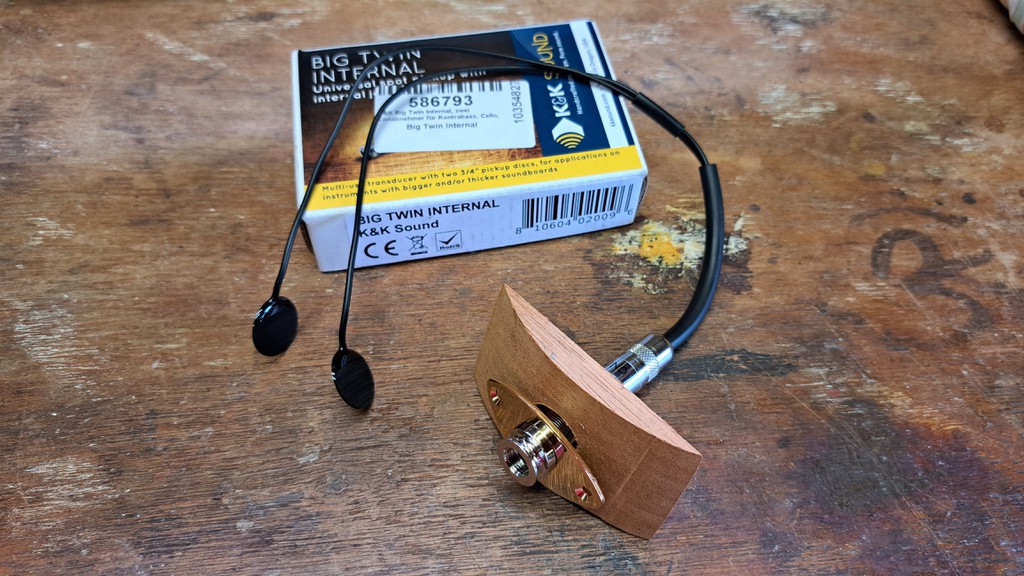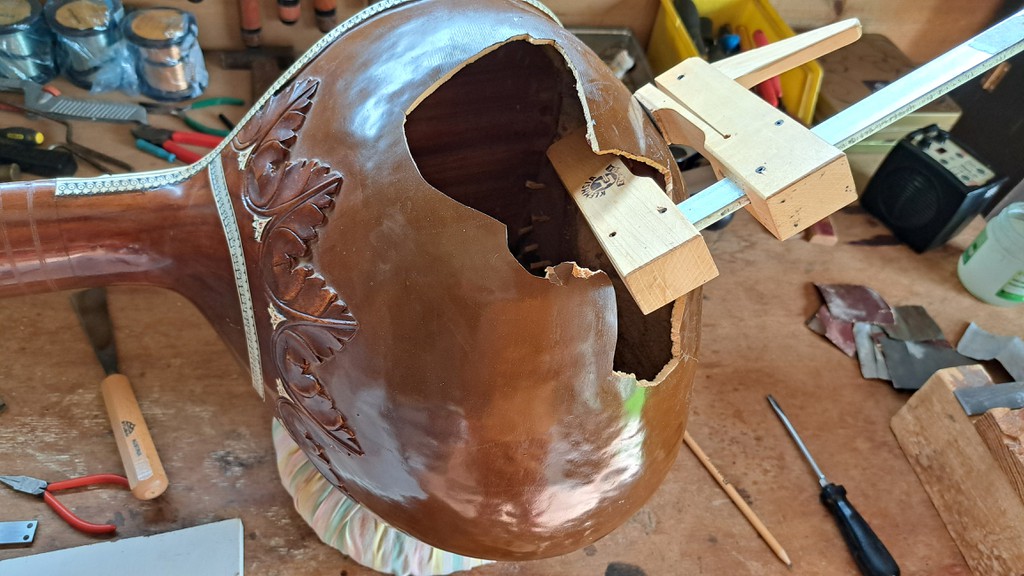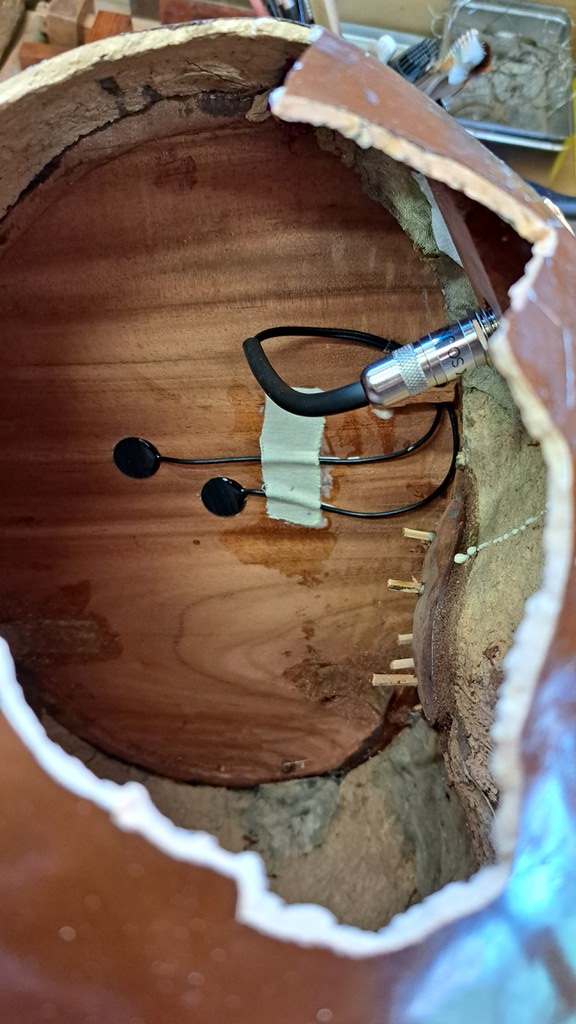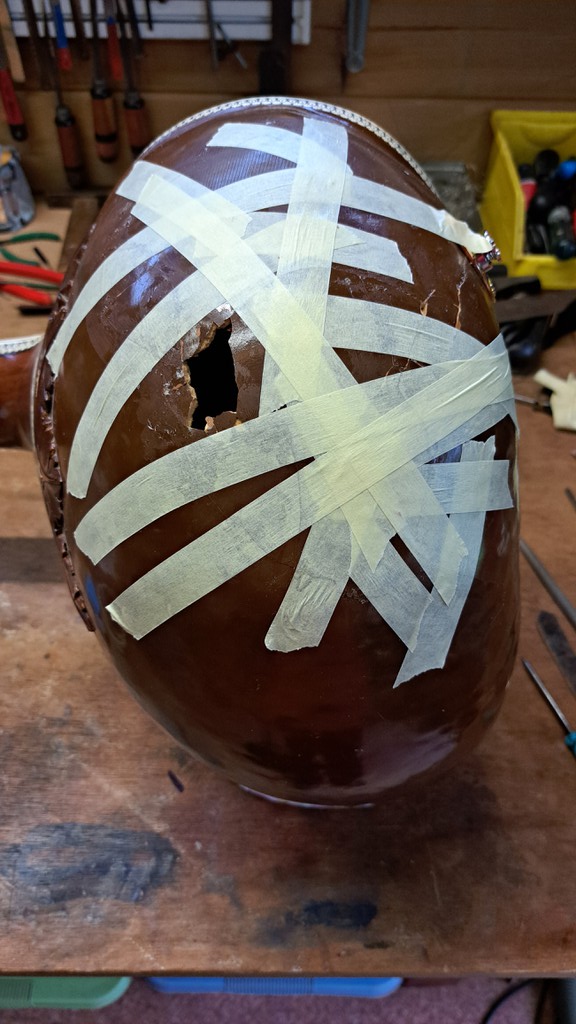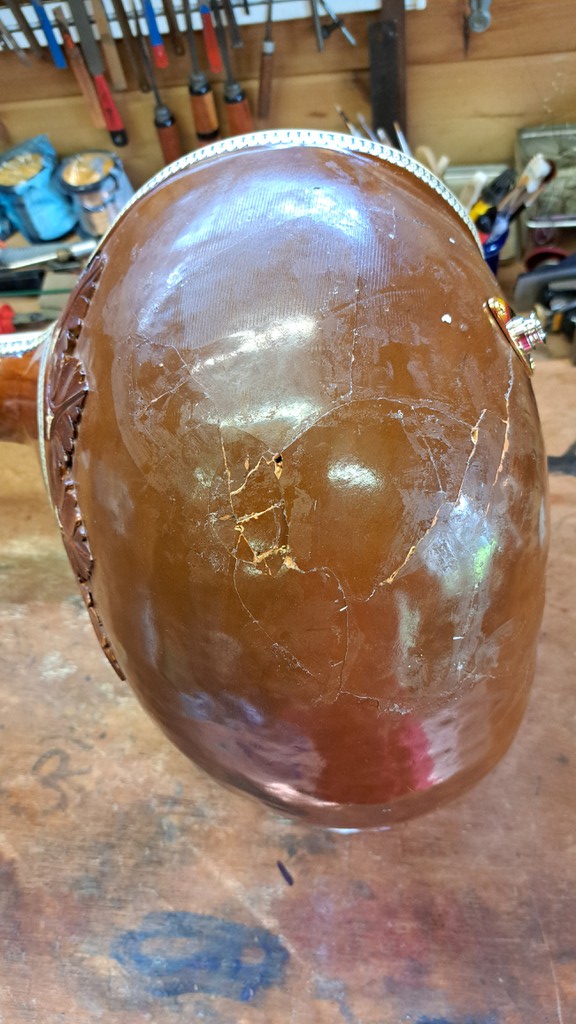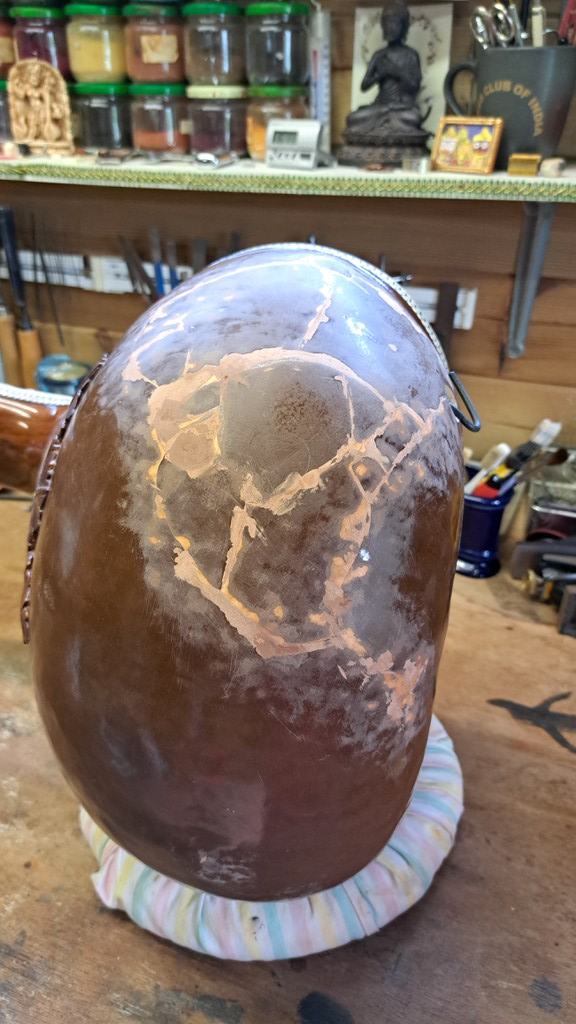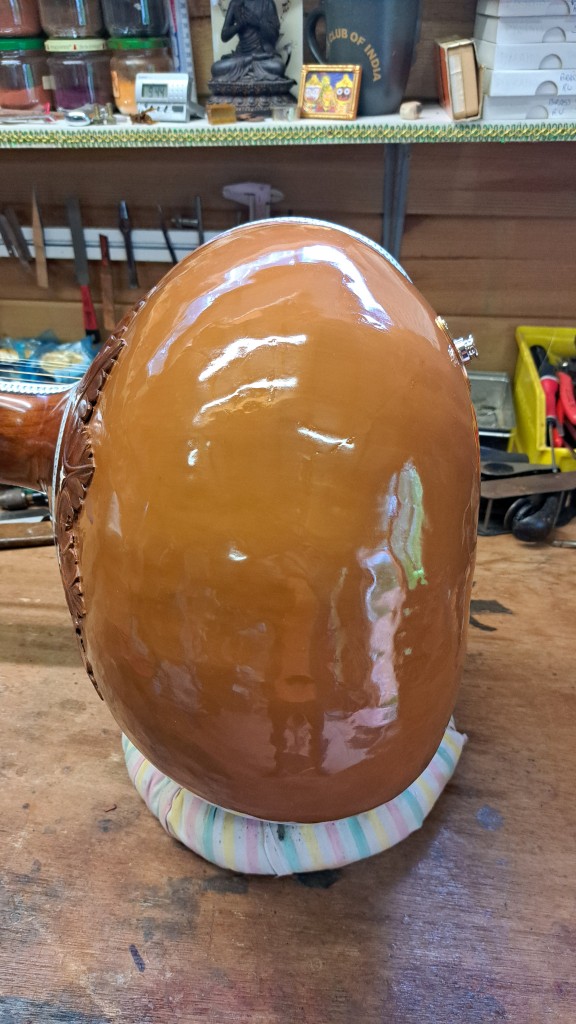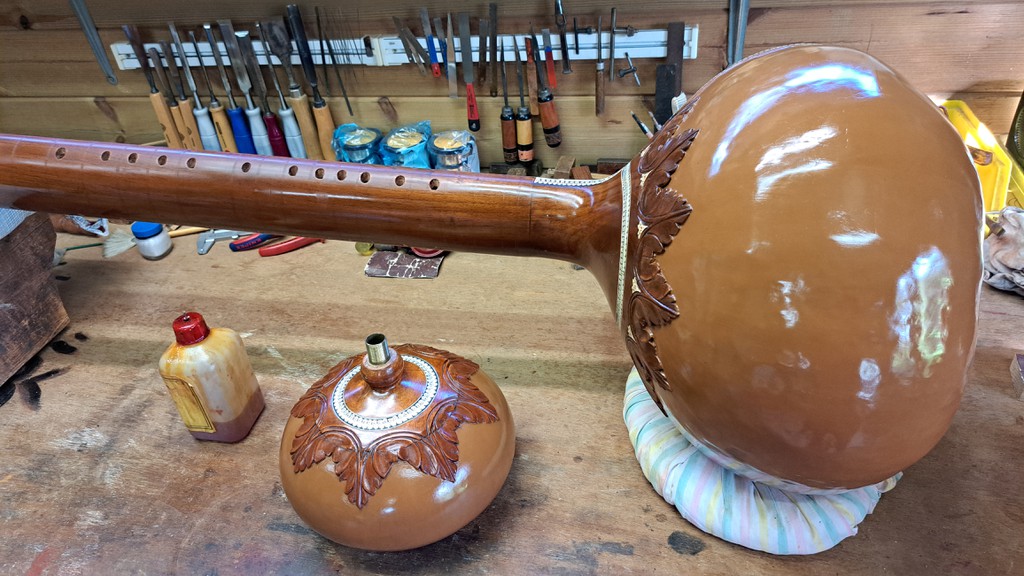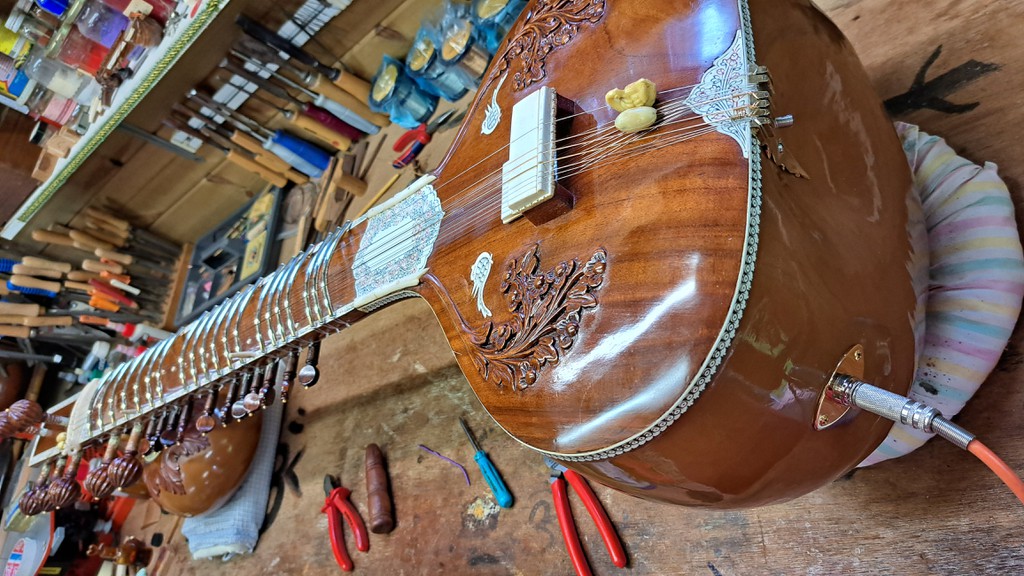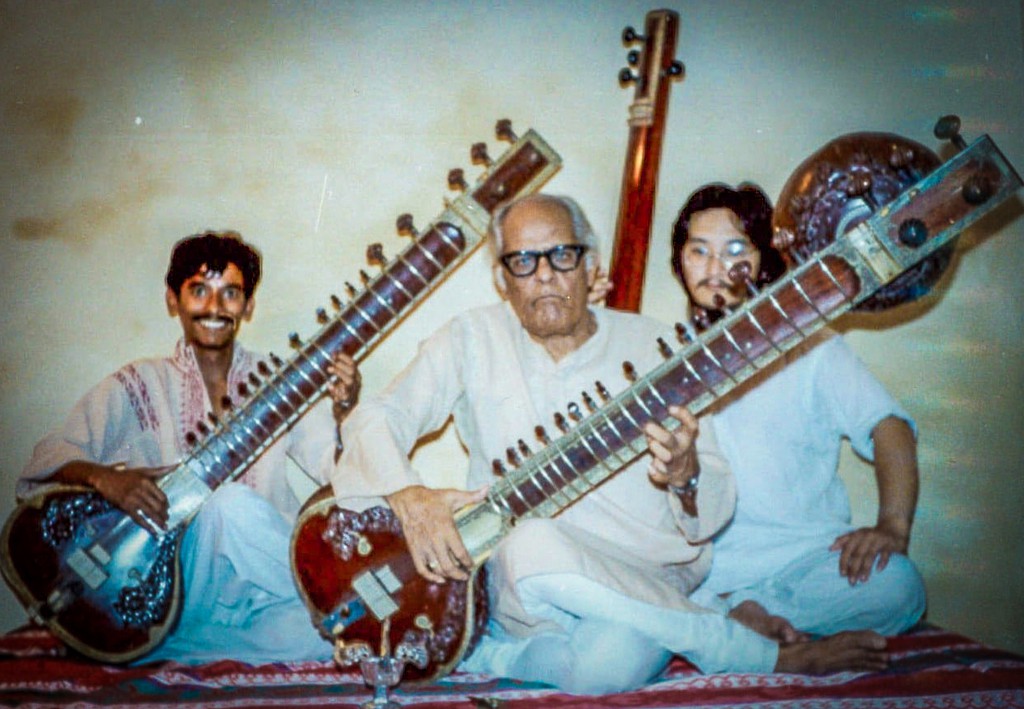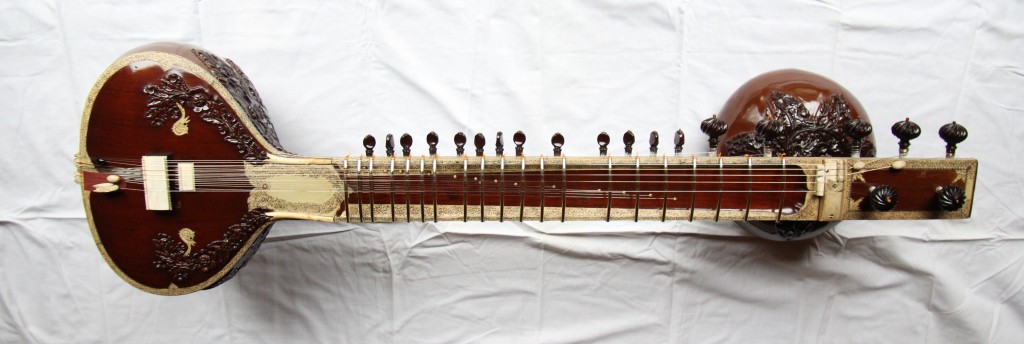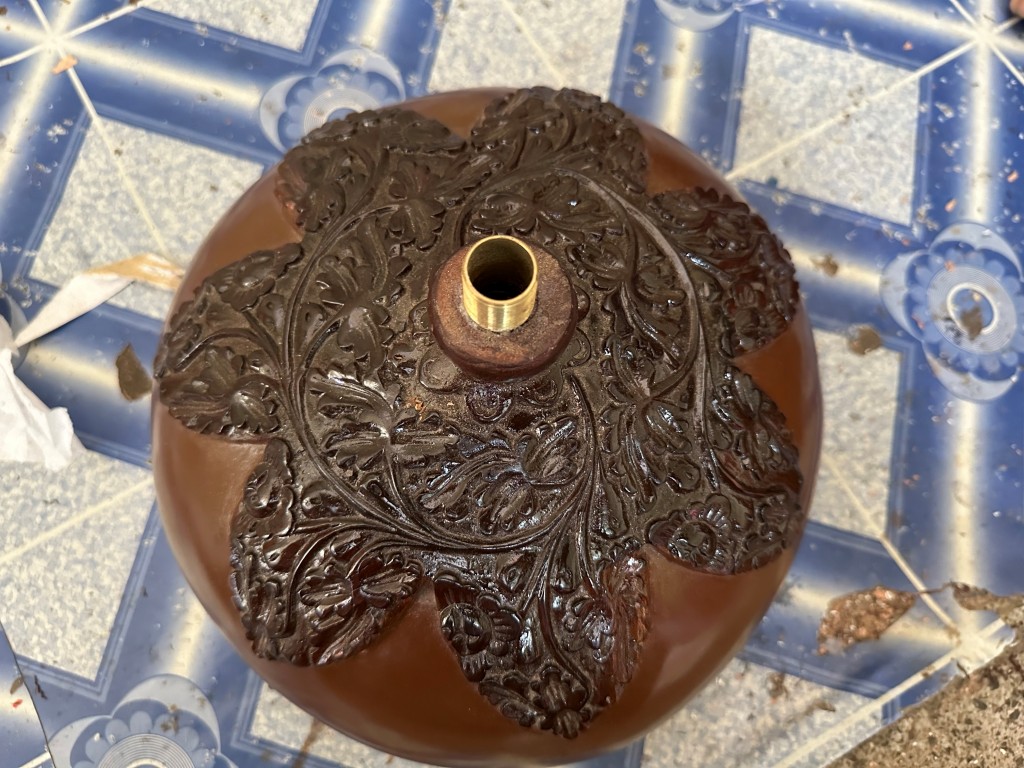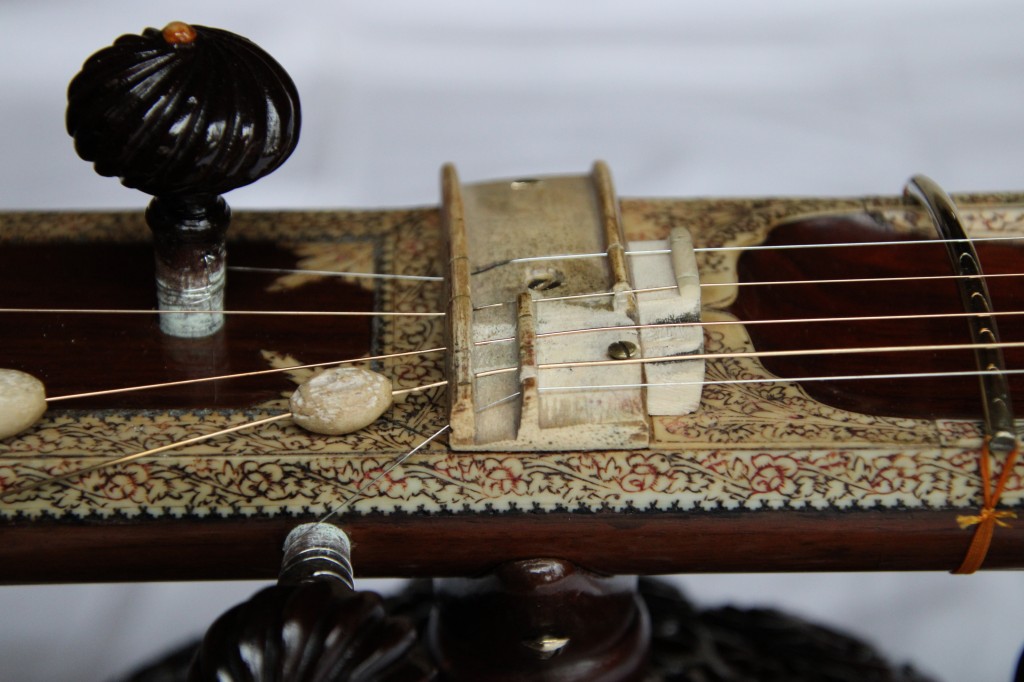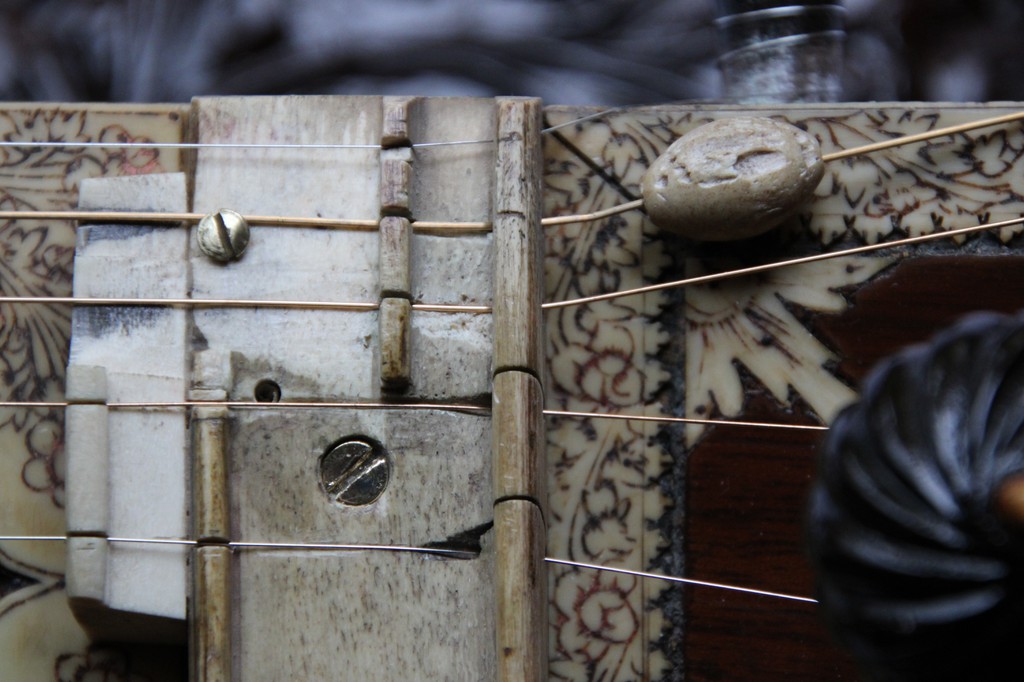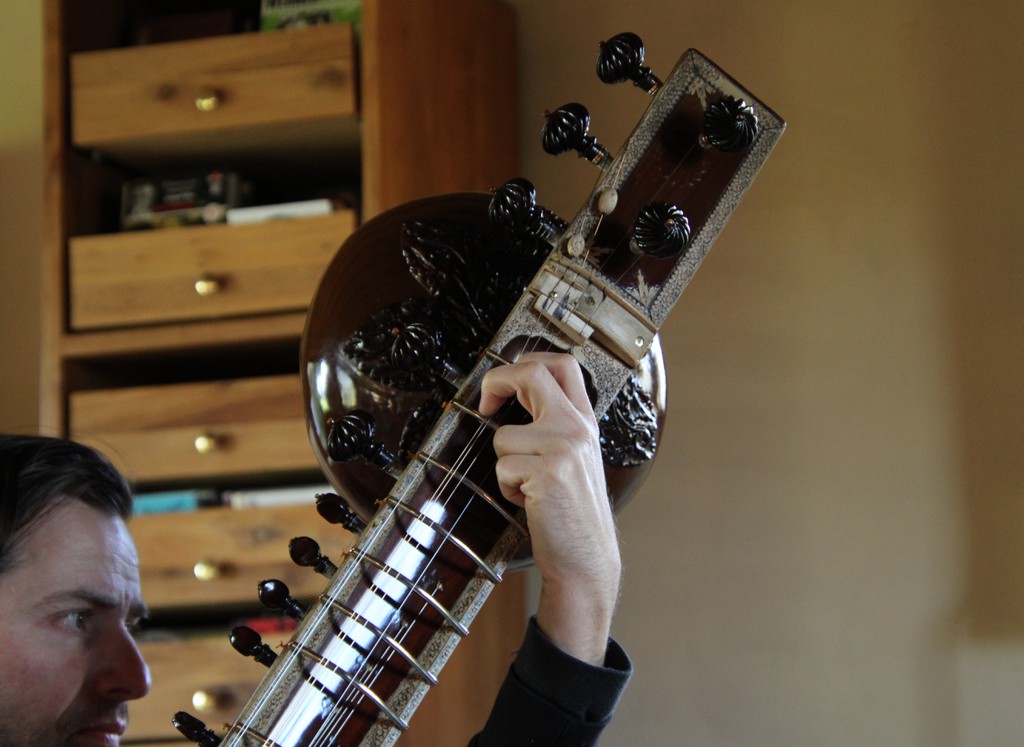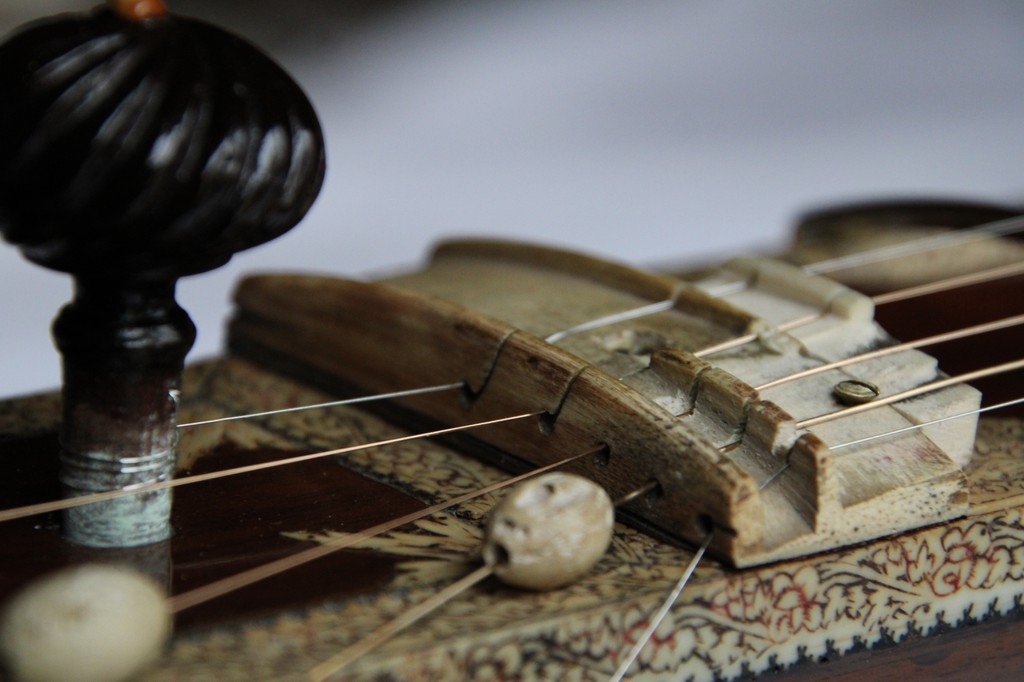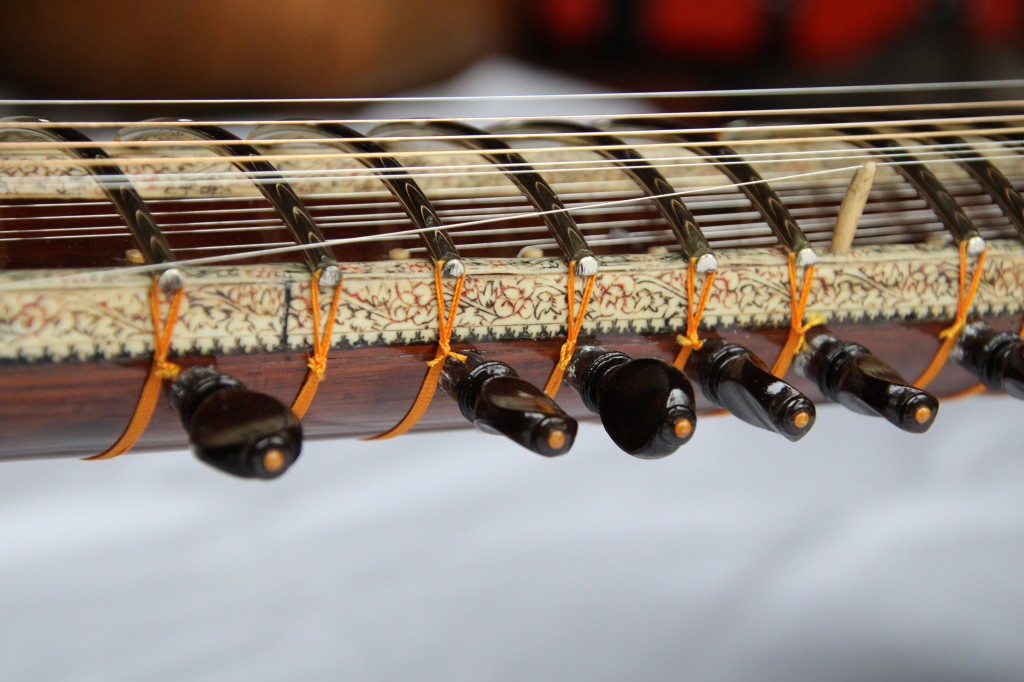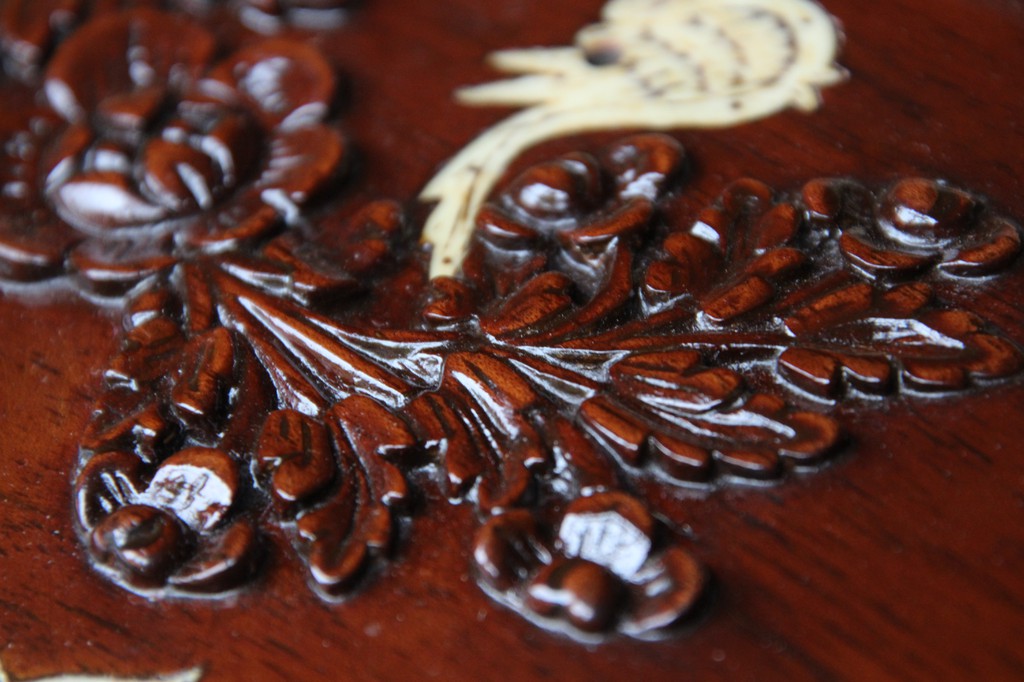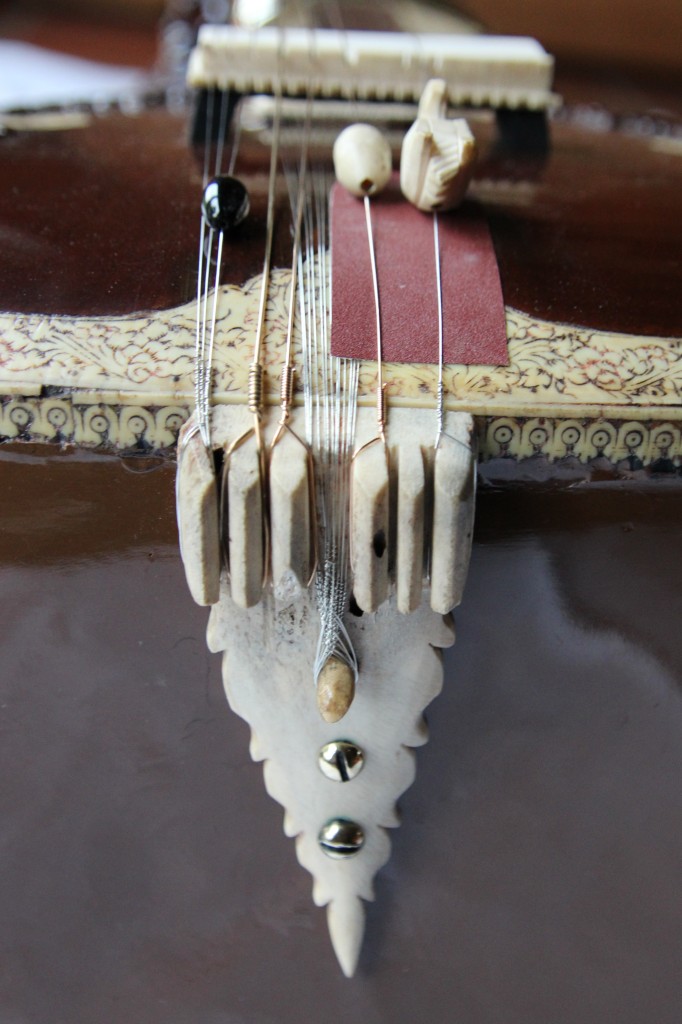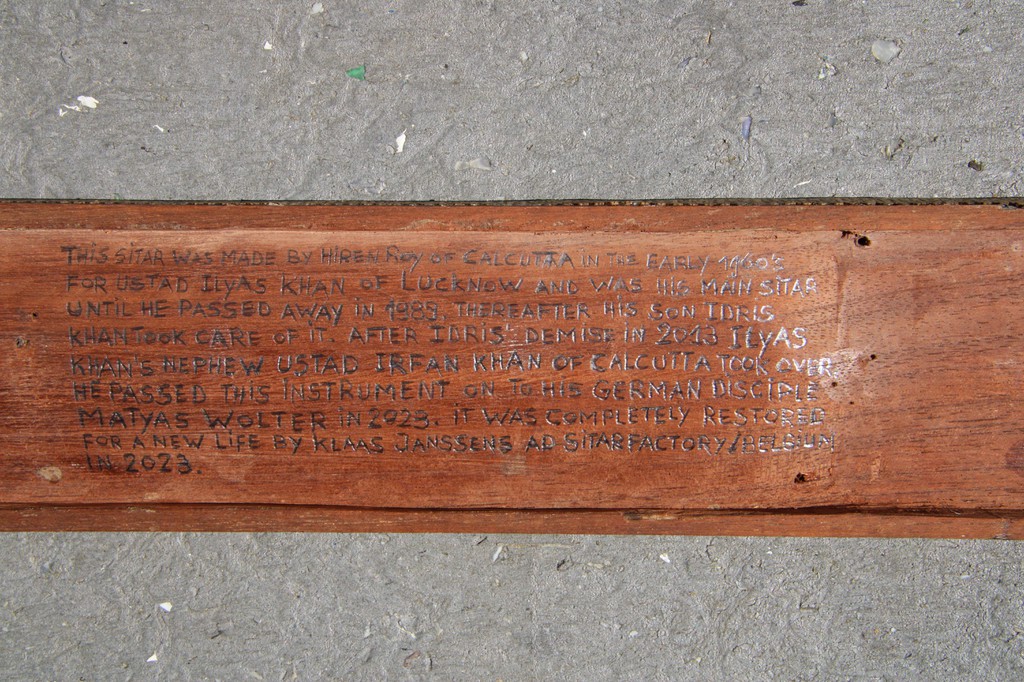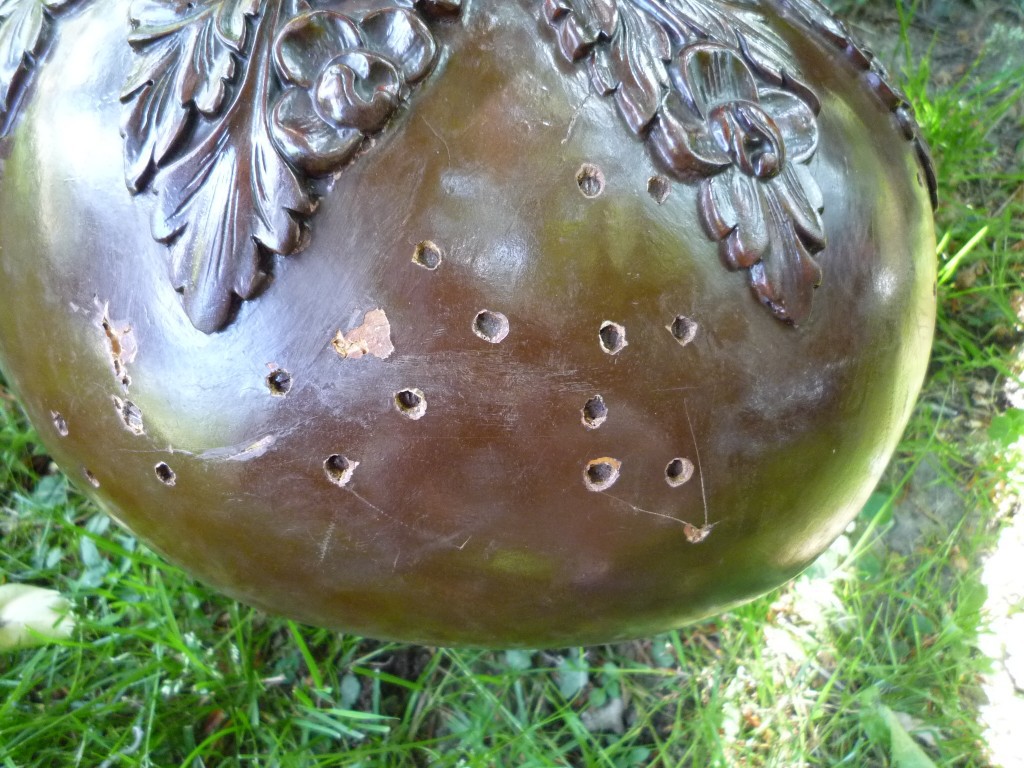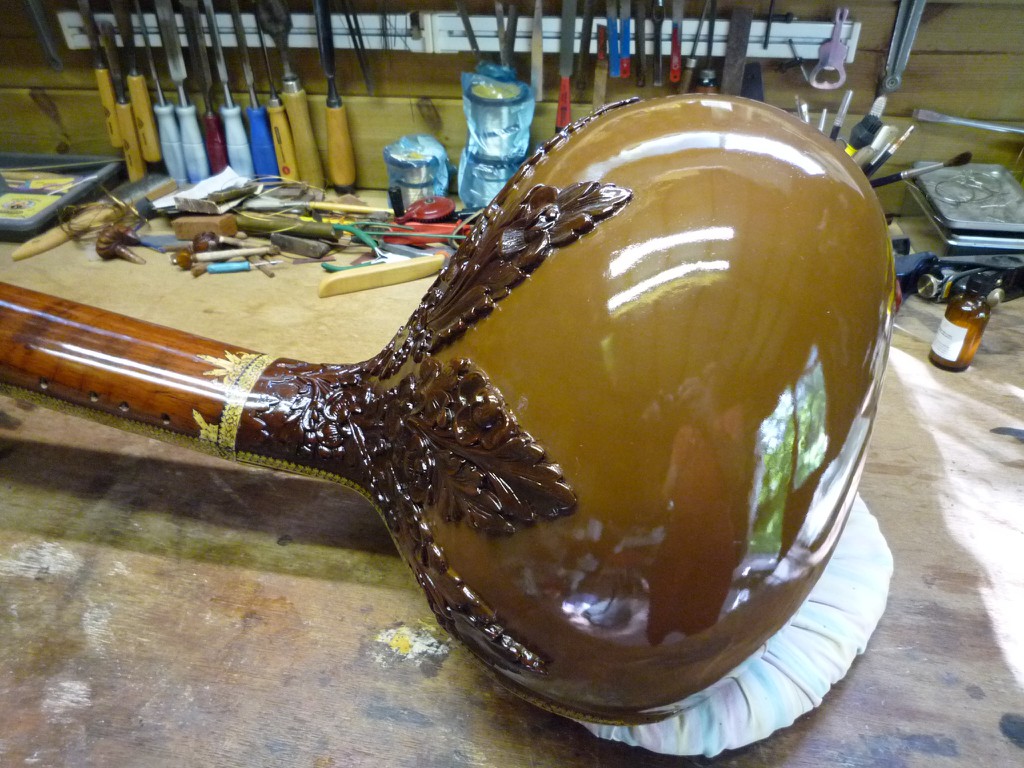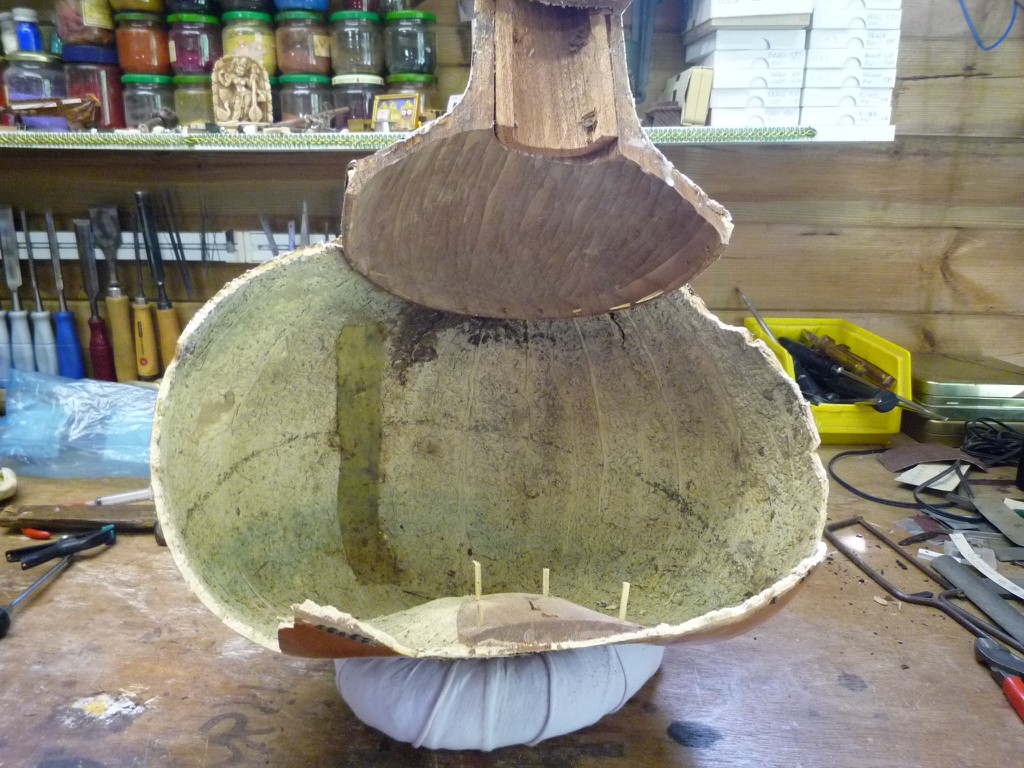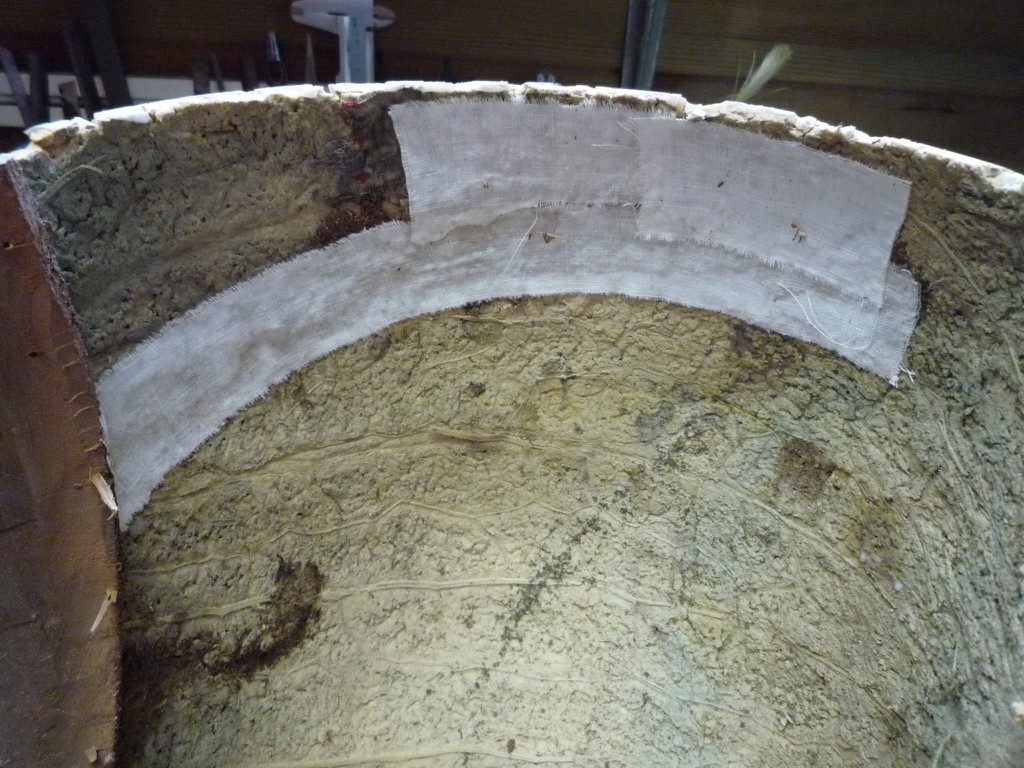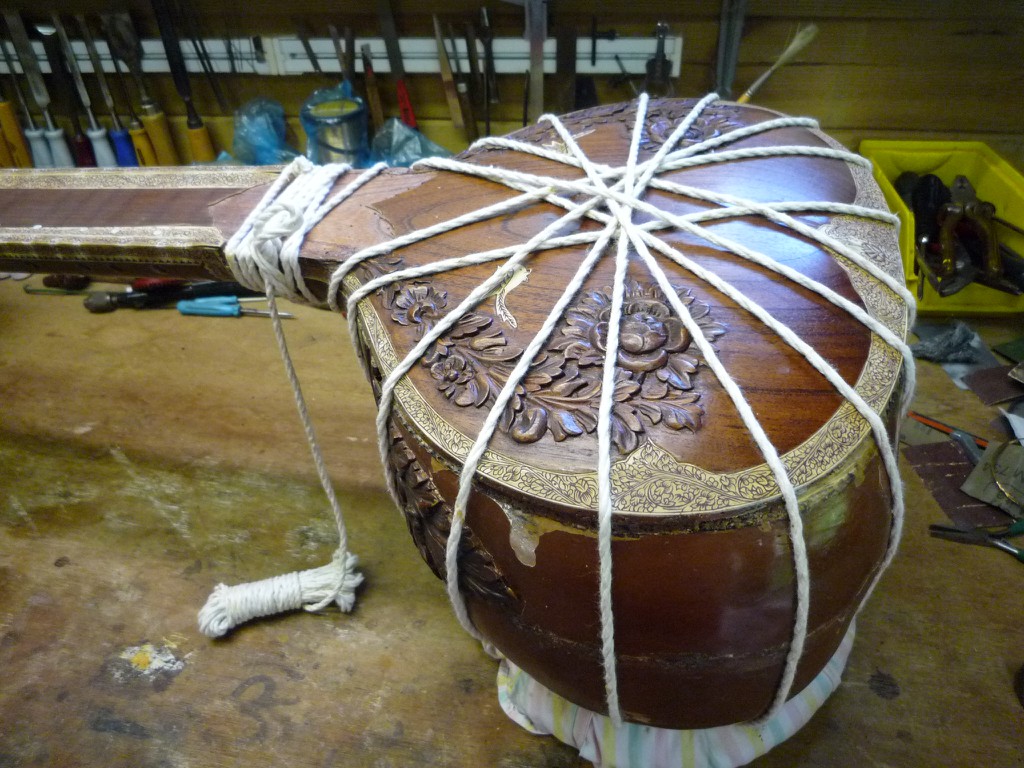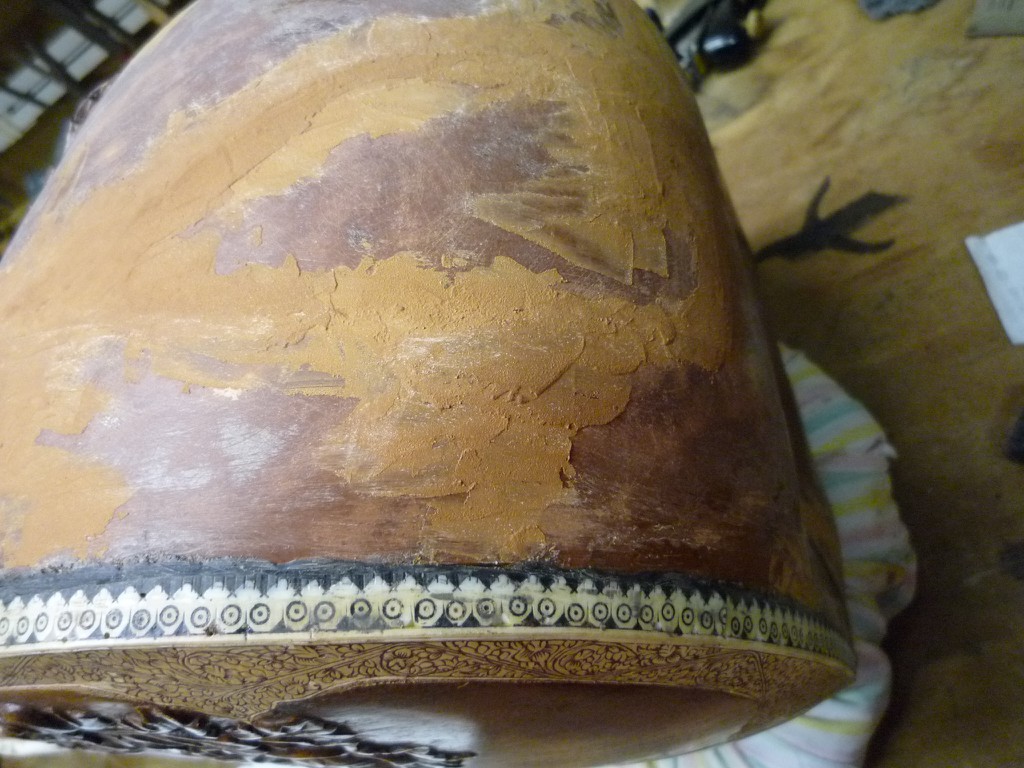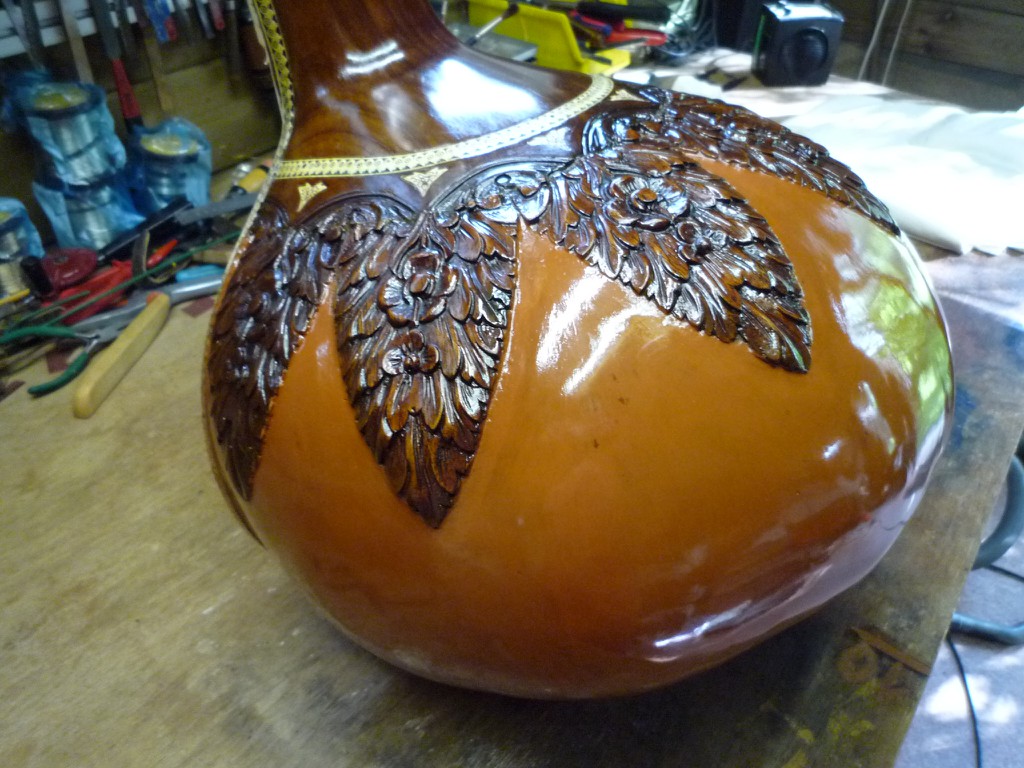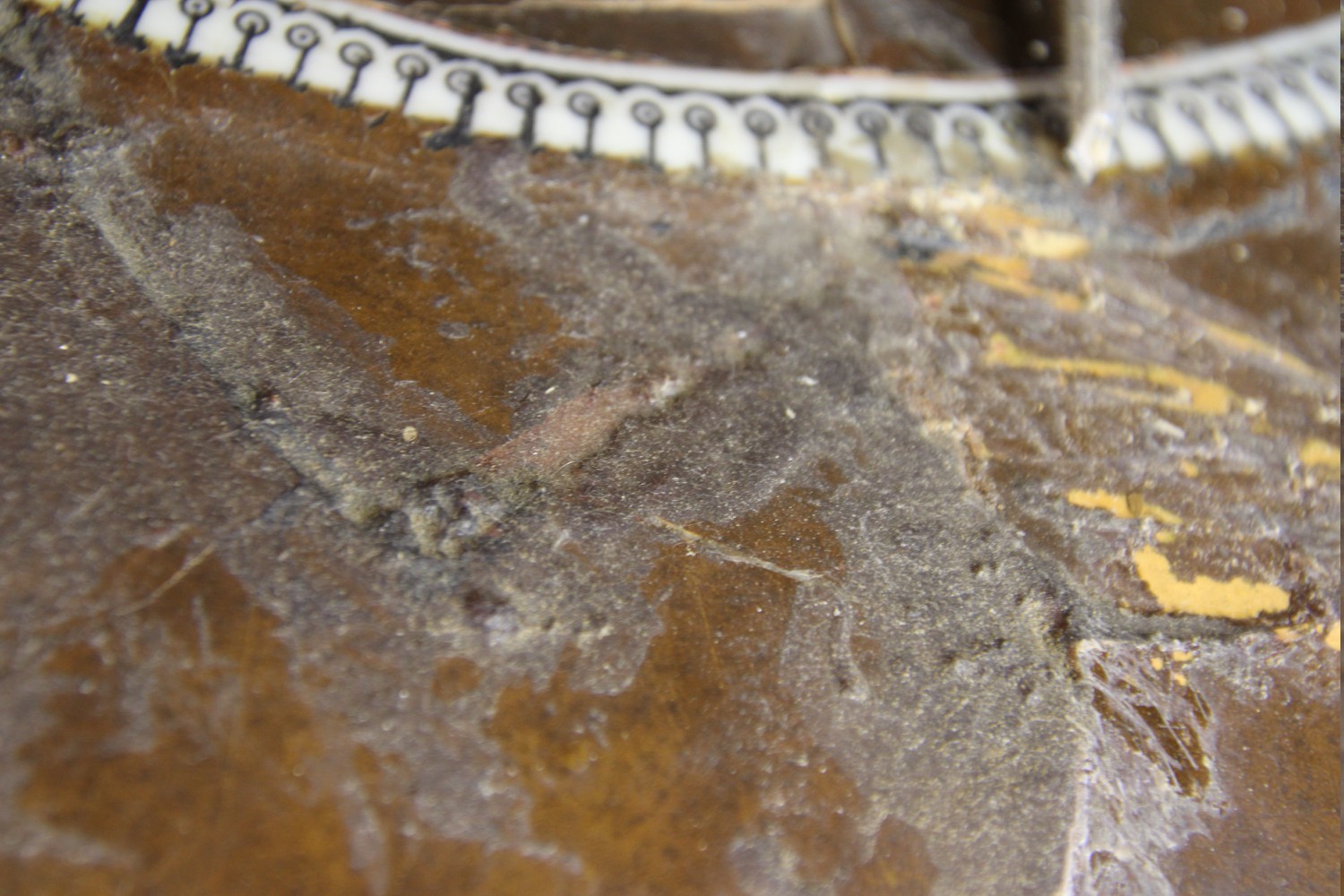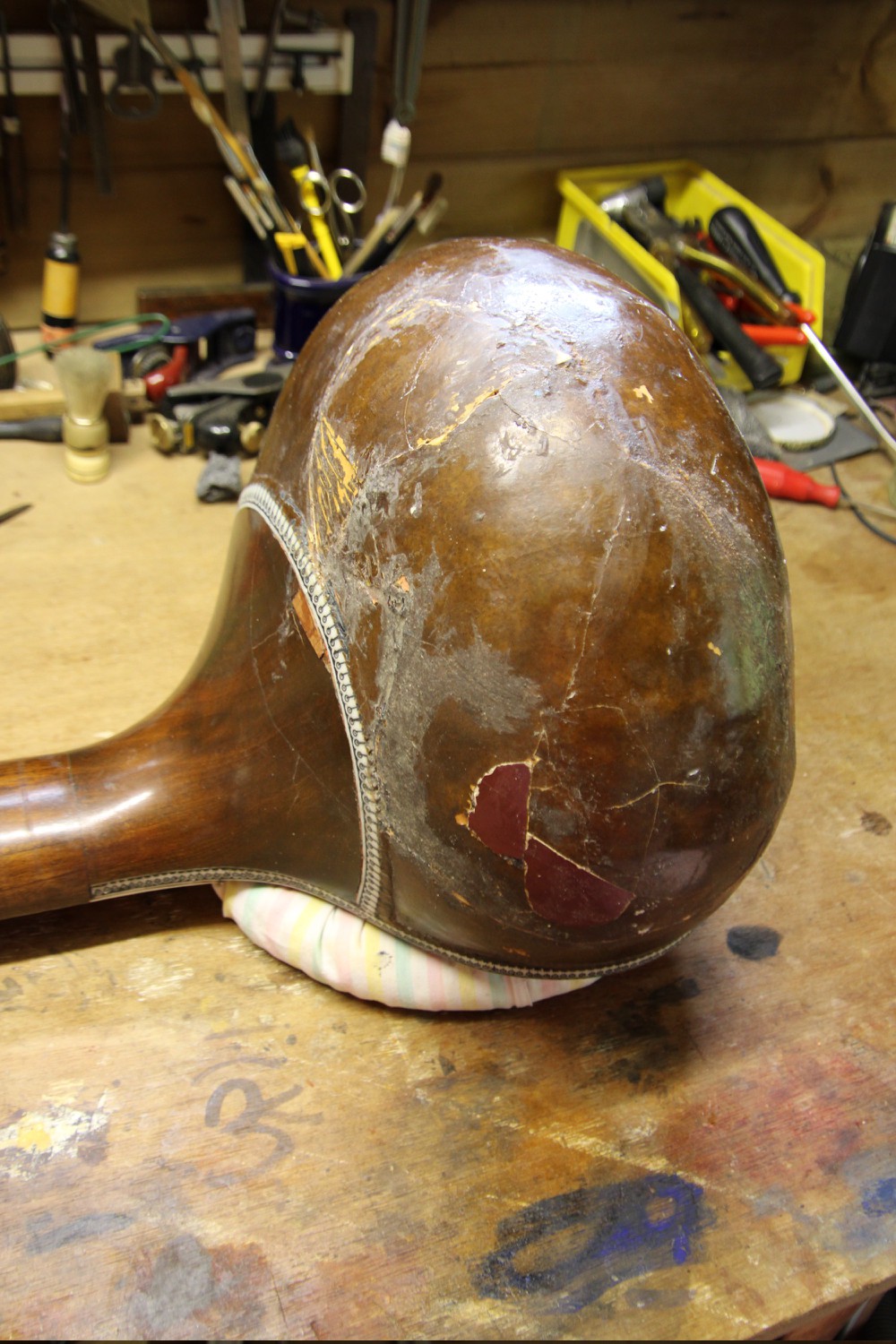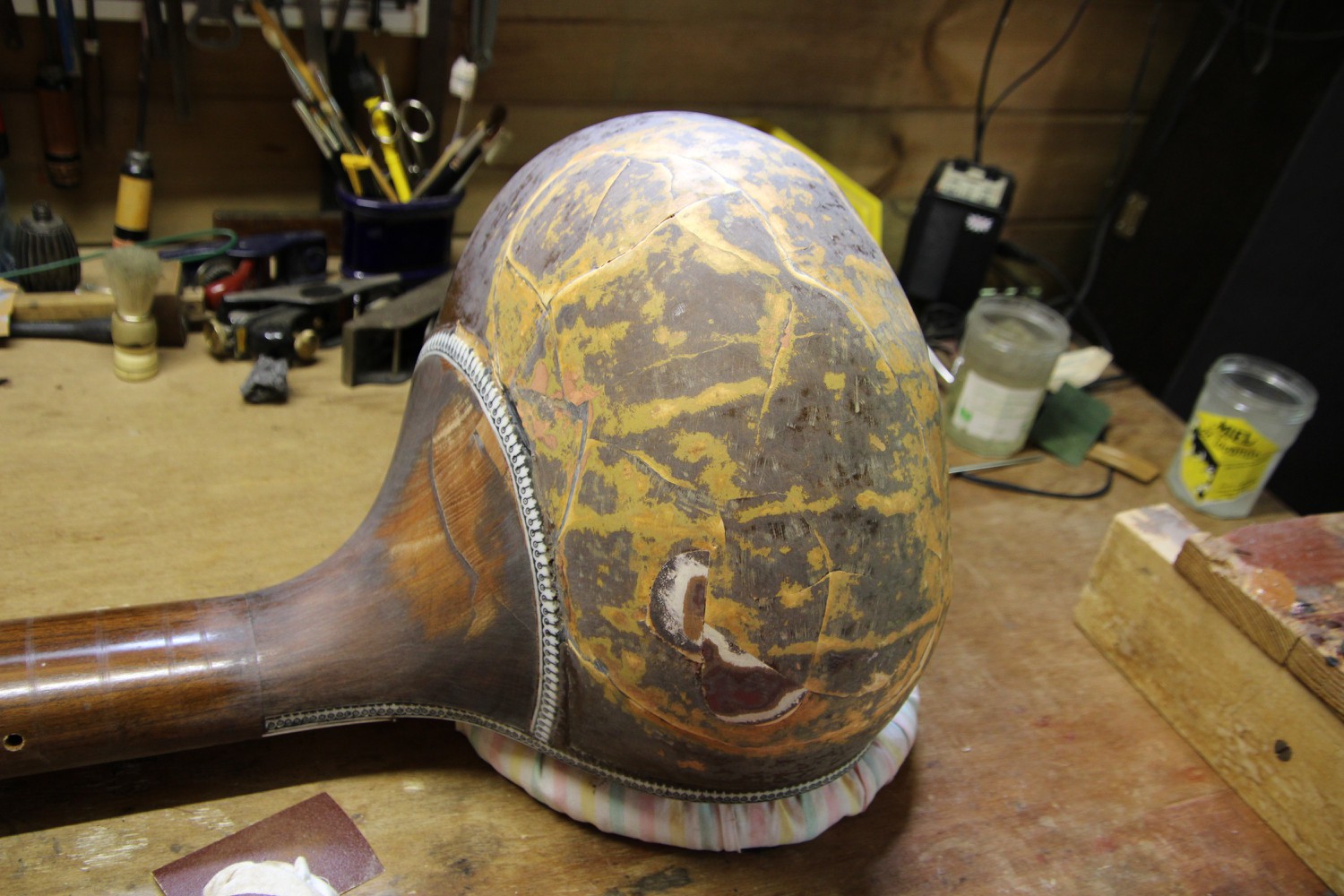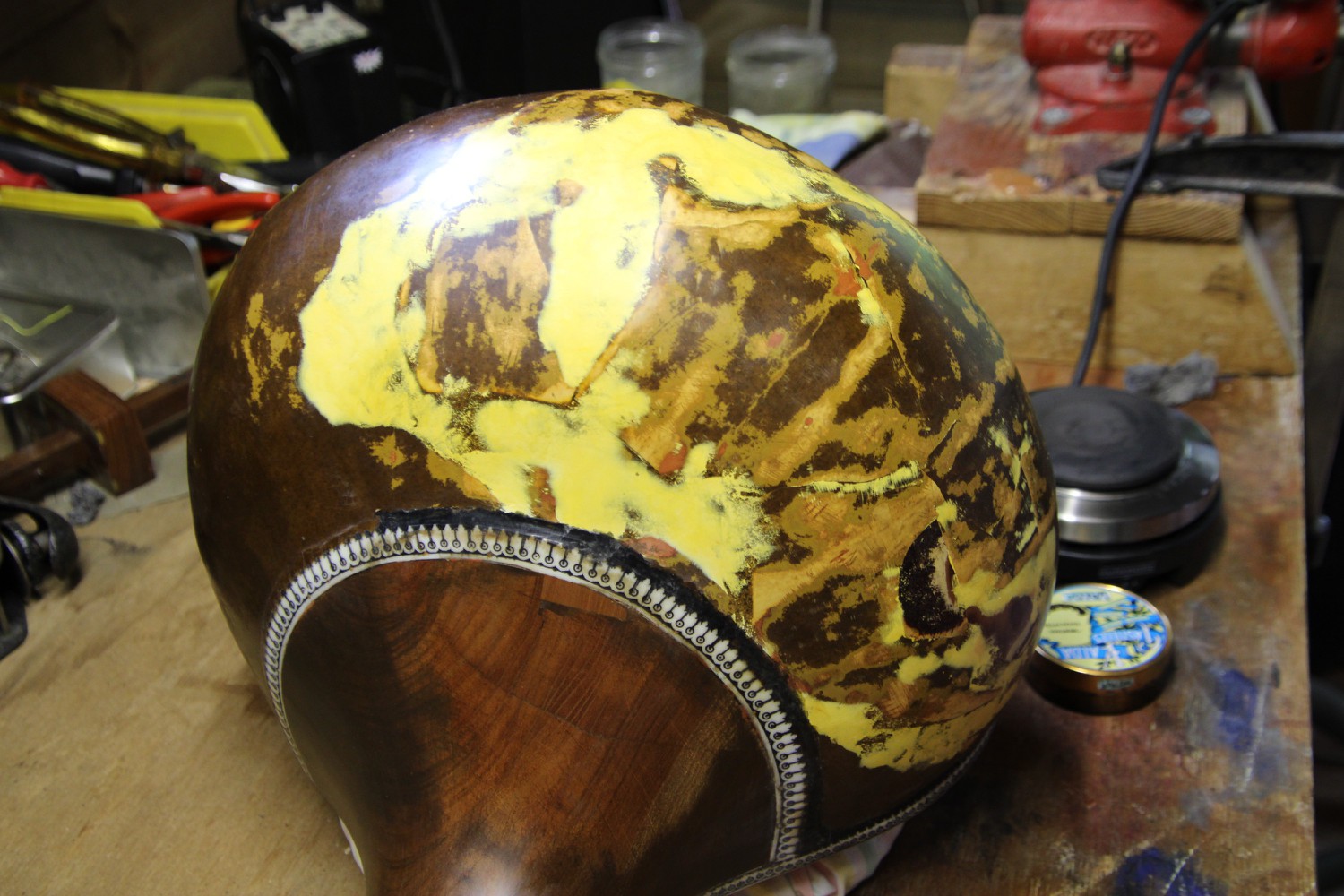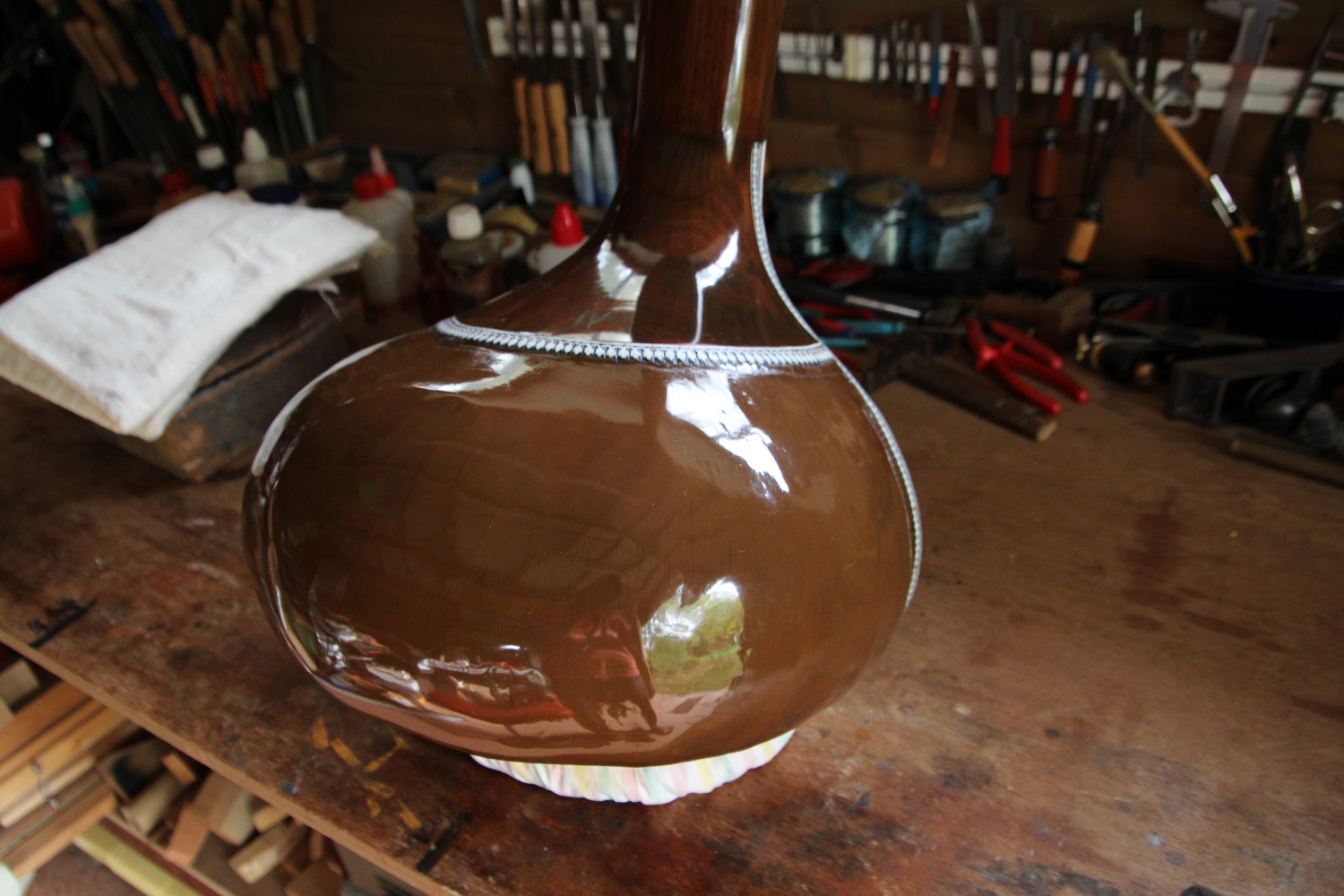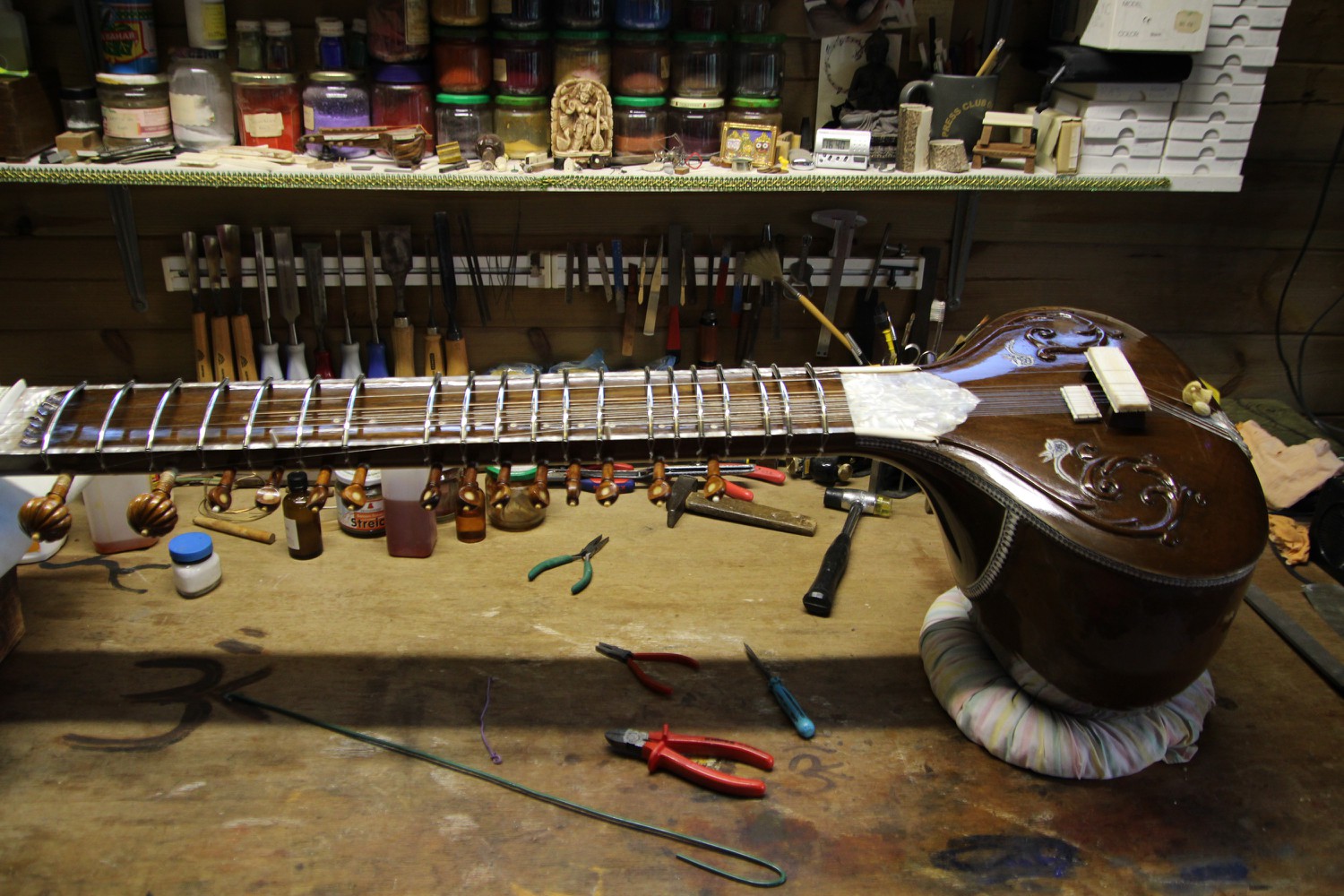In a first part, you can learn about this particular ancient instrument, baptised the Kabul sitar, and read a description of how to check and repair the body and make the missing wooden parts.
At that time, it was already clear that other important parts were also missing: at least 4 frets had disappeared and, since the intention was to make this a playable instrument again, new bridges also had to be built.
The type of frets used on this old instrument is almost impossible to find anymore. They are flat metal (bronze or brass) strips with a rounded top and 2 gutters on either side of the rounded top. The fixing wires can run into those.
I don’t know a thing about metalworking. So it was thought to outsource this job to someone else. After some research, Matyas found a German goldsmith who was willing to make 4. This job took a very long time (-1 year) and the result was very disappointing. The material used was very different from the originals and the gutters for attaching the strings were simply unusable. Very unfortunate but back to square one!!!
Around that time, I happened to get to know Kees Verbeek from Eindhoven, the Netherlands. He builds a nice surbahar himself and had a few questions about it. I note on his business card that he is actually also a bronze caster. Assuming that these old frets were made of bronze, I presented Kees with the project and asked him if he could take a look at recreating such frets for us.
Kees was very enthusiastic and I sent him 2 original ones. He immediately set to work. The material eventually turned out to be brass, not bronze, and Kees managed to recreate 4 new ones in no time.
He had a sheet of brass lying around at the right thickness, cut strips out of it and rolled the shape into it. Then he filed in the gutters with fine needle files and finished them seamlessly.
Apart from the fact that they were made recently and thus still have a noticeable new metal sheen, they are barely distinguishable from the originals.
Wonderful work by Kees Verbeek! (keesv @ hccnet.nl)
Meanwhile, I made 2 new bridges from first-class quality bone. Or rather bridges, as the instrument does seem quite a bit smaller than an ordinary modern sitar. Although remarkably: the length and the scale have remained almost the same. And, the instrument weighs only 1.32 Kg, which is very little compared to a present-day sitar that easily weighs over 2.34 Kg.
This brings us steadily to the finishing touches. Matyas wants to play it and, as the instrument is very lightly built, we choose a light, thin stringing in a rather low tuning C. For details, see the overview of the Kabul 1900 sitar string set / tuning chart.
Once we agree on these details, I can start fitting the frets. First, I put on a baj string and a jora string. That’s enough to start setting and binding the frets. The position of the frets is determined by the tuning. Little adjustment to the height and position of the bridge is needed to achieve a workable fret distribution. Since this old type of sitar has only 17 frets, the positions for Komal RE, Komal GA and Komal DHA initially remain empty. Even the high Komal NI is not provided permanently.
Once all the frets are in position I check everything again. Finally, the rest of the strings go on. The new Kabul sitar sounds soft and very lively. Matyas will be pleased. I look forward to hearing a bit of sound from him….
Kabul 1900 sitar string set / tuning chart :
1. Baj – steel wire 0,28mm / N°2 tuned to F3
2. Jora – bronze wire 0,37mm / N°28 tuned to C3
3. Jora – bronze wire 0,37mm / N°28 tuned to C3
4. Laraj – bronze wire 0,46mm / N°26 tuned to G3
5. Pancham – steel wire 0,25mm / N°0 tuned to G4
6. Cikari – steel wire 0,19mm / N°000 tuned to C5
7. Cikari – steel wire 0,19mm / N°000 tuned to C6
0. Taravs – steel wire 0,19mm / N°000


